Climate Change & Biodiversity Loss
- Lisbeth
- Site Admin
- Posts: 67571
- Joined: Sat May 19, 2012 12:31 pm
- Country: Switzerland
- Location: Lugano
- Contact:
Re: Climate Change & Biodiversity Loss
First the money has to be found 
"Education is the most powerful weapon which you can use to change the world." Nelson Mandela
The desire for equality must never exceed the demands of knowledge
The desire for equality must never exceed the demands of knowledge
- Lisbeth
- Site Admin
- Posts: 67571
- Joined: Sat May 19, 2012 12:31 pm
- Country: Switzerland
- Location: Lugano
- Contact:
Re: Climate Change & Biodiversity Loss
GREEN RECOVERY ACTION PLAN OP-ED
Fighting the climate crisis and halting biodiversity loss key as we build back better and greener for the next generation
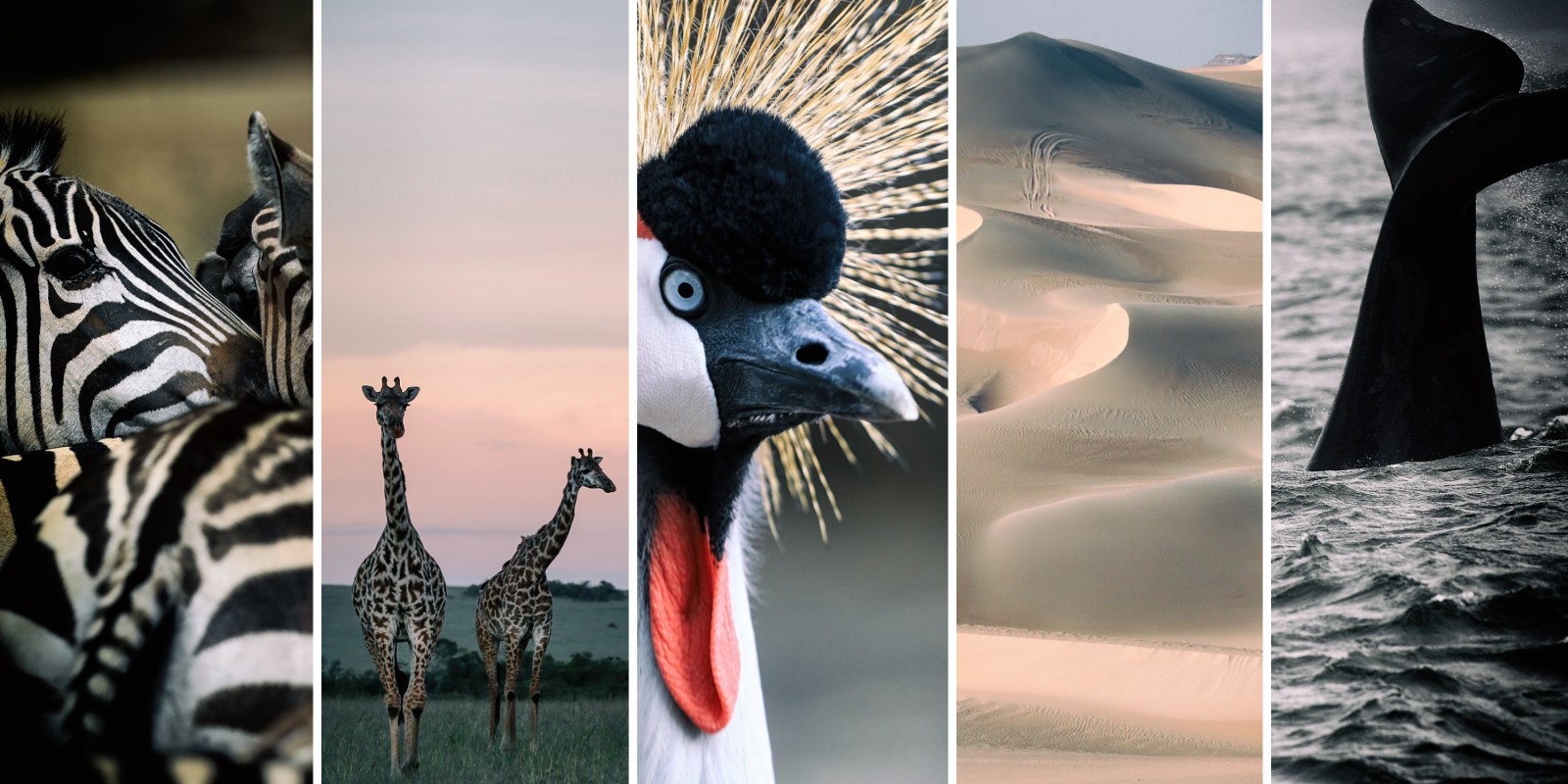
From left: Zebras in Kenya's Nairobi National Park on 10 August 2021. (Photo: EPA-EFE/Daniel Irungu) | Giraffes under a full moon in the Maasai Mara National Reserve, southwestern Kenya, on 26 December 2015. (Photo: EPA/Dai Kurokawa) | A Grey Crowned Crane in the Lake Baringo National Park, west-central Kenya, on 21 October 2021. (Photo: EPA-EFE/Daniel Irungu) | The Great Sand Sea in Egypt stretches for hundreds of kilometres, with 100m-high dunes. (Photo: EPA-EFE/Khaled Elfiqi) | A Southern Right Whale off Hermanus on the southern coast of the Western Cape on 26 June 2010. (Photo: EPA/Franck Robichon)
By Per Olsson Fridh, Josefa Sacko and Per Bolund | 09 Nov 2021
Africa is home to remarkable animal, plant and marine biodiversity. It is rich in critical ecosystems that serve as buffers to climate change. Sweden is partnering with the African Union in the Green Recovery Action Plan.
_______________________________________________________________________________________________________________
Covid-19 and climate change are unprecedented challenges for all of us. While we now rightly focus on containing the virus, addressing the immediate health crisis and limiting the economic damage, we also need to start tracking our way out of the crisis towards recovery. We need to ensure the recovery is based on the vast opportunities that green transition offers.
Africa is home to remarkable animal, plant and marine biodiversity. The continent is rich in tropical forests, wetlands, deserts, savanna and montane grasslands, providing critical ecosystem services and serving as buffers to climate change.
For example, mangrove swamps protect coastal societies in East Africa from cyclones and tsunamis, while serving as a home for various species and a source of income for the local people.
However, the region is experiencing a dramatic loss of biodiversity. Agricultural and other human expansion on land and in the sea, overexploitation of wildlife and the spread of invasive alien species are some of the drivers for biodiversity loss, and so is climate change and pollution.
Scientists have warned that by 2100, climate change alone could cause the loss of more than half of mammal and bird species and trigger a 10% to 30% decline in lake productivity.
The effects are already becoming apparent, and if we fail to address these interlinked crises we will see more hunger, new pandemics, greater injustice and marginalisation, more conflicts and forced migration. Conservation and sustainable use of biodiversity is a cornerstone of development – loss of diversity poses risks to existing development gains and to further progress. And we know that climate change and loss of biodiversity are particularly affecting people living in rural areas who are often the poorest.
How do we address the ongoing disastrous loss of biodiversity while building better and more fair societies in the wake of the pandemic?
We know that urgent action is required at global, continental, regional and local level, and we must work together. In order to deal with these challenges, the African Union recently launched a new continental Green Recovery Action Plan for the period 2021-27 that includes a pillar for biodiversity. Sweden is honoured to co-champion this important initiative. Through collaboration with African countries and partners we will bring this plan to life on the ground and showcase positive examples.
Nature-based solutions must be identified and implemented. The focus will be on biodiversity through work on sustainable land management, including forestry and marine ecosystems.
We can and must all ensure we put climate action and protection of biodiversity at the heart of national budgets and planning processes. This in turn will facilitate resource mobilisation for implementing the 2030 Agenda, Agenda 2063 as well as the Paris Agreement and the protection of biodiversity.
Let’s use the urgency of climate action and biodiversity protection as a driver also for broader development gains. There is no contradiction between curbing fossil fuel emissions and achieving economic growth. Instead, we know that shifting to green, eco-friendly energy solutions creates employment and contributes to development through increased trade and investment.
The African Union Commission is committed to working with its member states, regional economic communities, partners and relevant stakeholders to drive Africa’s economic recovery from Covid-19 in a sustainable manner. The commission aims to do this through the implementation of the Green Recovery Action Plan’s five pillars – Climate Finance, Renewable Energy, Nature-Based Solutions and Biodiversity, Resilient Agriculture and Green Resilient Cities to drive Africa’s economic recovery from Covid-19 in a sustainable manner.
Sweden will do its part as one of the largest financial contributors to climate change and biodiversity-related development aid. Ensuring climate change resilience is a key focus in our bilateral and regional development programmes across Africa.
2021 is the African Union’s Year of Arts, Culture and Heritage. When talking about culture and heritage, it includes not only the social behaviour and norms of a society, but also the society we want to hand over to the next generation.
Loss of biodiversity and climate change are both driven by human economic activities and mutually reinforce each other. Neither will be successfully resolved unless both are tackled. And just as humans are responsible for this multiple crisis, we also have the power to decide on sustainable solutions to change this path.
For this reason, a successful outcome of the UN climate conference COP26 in Glasgow is crucial. Equally important is to come together and adopt a biodiversity agreement to save life on Earth. This will be in focus at the second part of the UN biodiversity conference COP15 scheduled to take place in Kunming, China in 2022.
It is in our common interest to advance an agenda that ensures a green transition and fosters sustainable development. This is the time to not only talk the talk but also walk the walk. The African Union and Sweden are committed to deliver on our commitments, and we urge others to step up efforts as we build back better and greener for the next generation. DM/OBP
Per Olsson Fridh is Sweden’s Minister for International Development Cooperation; Josefa Sacko is Sweden’s African Union Commissioner; and Per Bolund is Sweden’s Deputy Prime Minister and Minister for Environment and Climate, Agriculture, Rural Development and Blue Economy.
Fighting the climate crisis and halting biodiversity loss key as we build back better and greener for the next generation

From left: Zebras in Kenya's Nairobi National Park on 10 August 2021. (Photo: EPA-EFE/Daniel Irungu) | Giraffes under a full moon in the Maasai Mara National Reserve, southwestern Kenya, on 26 December 2015. (Photo: EPA/Dai Kurokawa) | A Grey Crowned Crane in the Lake Baringo National Park, west-central Kenya, on 21 October 2021. (Photo: EPA-EFE/Daniel Irungu) | The Great Sand Sea in Egypt stretches for hundreds of kilometres, with 100m-high dunes. (Photo: EPA-EFE/Khaled Elfiqi) | A Southern Right Whale off Hermanus on the southern coast of the Western Cape on 26 June 2010. (Photo: EPA/Franck Robichon)
By Per Olsson Fridh, Josefa Sacko and Per Bolund | 09 Nov 2021
Africa is home to remarkable animal, plant and marine biodiversity. It is rich in critical ecosystems that serve as buffers to climate change. Sweden is partnering with the African Union in the Green Recovery Action Plan.
_______________________________________________________________________________________________________________
Covid-19 and climate change are unprecedented challenges for all of us. While we now rightly focus on containing the virus, addressing the immediate health crisis and limiting the economic damage, we also need to start tracking our way out of the crisis towards recovery. We need to ensure the recovery is based on the vast opportunities that green transition offers.
Africa is home to remarkable animal, plant and marine biodiversity. The continent is rich in tropical forests, wetlands, deserts, savanna and montane grasslands, providing critical ecosystem services and serving as buffers to climate change.
For example, mangrove swamps protect coastal societies in East Africa from cyclones and tsunamis, while serving as a home for various species and a source of income for the local people.
However, the region is experiencing a dramatic loss of biodiversity. Agricultural and other human expansion on land and in the sea, overexploitation of wildlife and the spread of invasive alien species are some of the drivers for biodiversity loss, and so is climate change and pollution.
Scientists have warned that by 2100, climate change alone could cause the loss of more than half of mammal and bird species and trigger a 10% to 30% decline in lake productivity.
The effects are already becoming apparent, and if we fail to address these interlinked crises we will see more hunger, new pandemics, greater injustice and marginalisation, more conflicts and forced migration. Conservation and sustainable use of biodiversity is a cornerstone of development – loss of diversity poses risks to existing development gains and to further progress. And we know that climate change and loss of biodiversity are particularly affecting people living in rural areas who are often the poorest.
How do we address the ongoing disastrous loss of biodiversity while building better and more fair societies in the wake of the pandemic?
We know that urgent action is required at global, continental, regional and local level, and we must work together. In order to deal with these challenges, the African Union recently launched a new continental Green Recovery Action Plan for the period 2021-27 that includes a pillar for biodiversity. Sweden is honoured to co-champion this important initiative. Through collaboration with African countries and partners we will bring this plan to life on the ground and showcase positive examples.
Nature-based solutions must be identified and implemented. The focus will be on biodiversity through work on sustainable land management, including forestry and marine ecosystems.
We can and must all ensure we put climate action and protection of biodiversity at the heart of national budgets and planning processes. This in turn will facilitate resource mobilisation for implementing the 2030 Agenda, Agenda 2063 as well as the Paris Agreement and the protection of biodiversity.
Let’s use the urgency of climate action and biodiversity protection as a driver also for broader development gains. There is no contradiction between curbing fossil fuel emissions and achieving economic growth. Instead, we know that shifting to green, eco-friendly energy solutions creates employment and contributes to development through increased trade and investment.
The African Union Commission is committed to working with its member states, regional economic communities, partners and relevant stakeholders to drive Africa’s economic recovery from Covid-19 in a sustainable manner. The commission aims to do this through the implementation of the Green Recovery Action Plan’s five pillars – Climate Finance, Renewable Energy, Nature-Based Solutions and Biodiversity, Resilient Agriculture and Green Resilient Cities to drive Africa’s economic recovery from Covid-19 in a sustainable manner.
Sweden will do its part as one of the largest financial contributors to climate change and biodiversity-related development aid. Ensuring climate change resilience is a key focus in our bilateral and regional development programmes across Africa.
2021 is the African Union’s Year of Arts, Culture and Heritage. When talking about culture and heritage, it includes not only the social behaviour and norms of a society, but also the society we want to hand over to the next generation.
Loss of biodiversity and climate change are both driven by human economic activities and mutually reinforce each other. Neither will be successfully resolved unless both are tackled. And just as humans are responsible for this multiple crisis, we also have the power to decide on sustainable solutions to change this path.
For this reason, a successful outcome of the UN climate conference COP26 in Glasgow is crucial. Equally important is to come together and adopt a biodiversity agreement to save life on Earth. This will be in focus at the second part of the UN biodiversity conference COP15 scheduled to take place in Kunming, China in 2022.
It is in our common interest to advance an agenda that ensures a green transition and fosters sustainable development. This is the time to not only talk the talk but also walk the walk. The African Union and Sweden are committed to deliver on our commitments, and we urge others to step up efforts as we build back better and greener for the next generation. DM/OBP
Per Olsson Fridh is Sweden’s Minister for International Development Cooperation; Josefa Sacko is Sweden’s African Union Commissioner; and Per Bolund is Sweden’s Deputy Prime Minister and Minister for Environment and Climate, Agriculture, Rural Development and Blue Economy.
"Education is the most powerful weapon which you can use to change the world." Nelson Mandela
The desire for equality must never exceed the demands of knowledge
The desire for equality must never exceed the demands of knowledge
- Lisbeth
- Site Admin
- Posts: 67571
- Joined: Sat May 19, 2012 12:31 pm
- Country: Switzerland
- Location: Lugano
- Contact:
Re: Climate Change & Biodiversity Loss
SAVE OUR PLANET
Time to take off the climate crisis blinkers and accept that everything as we know it needs to change
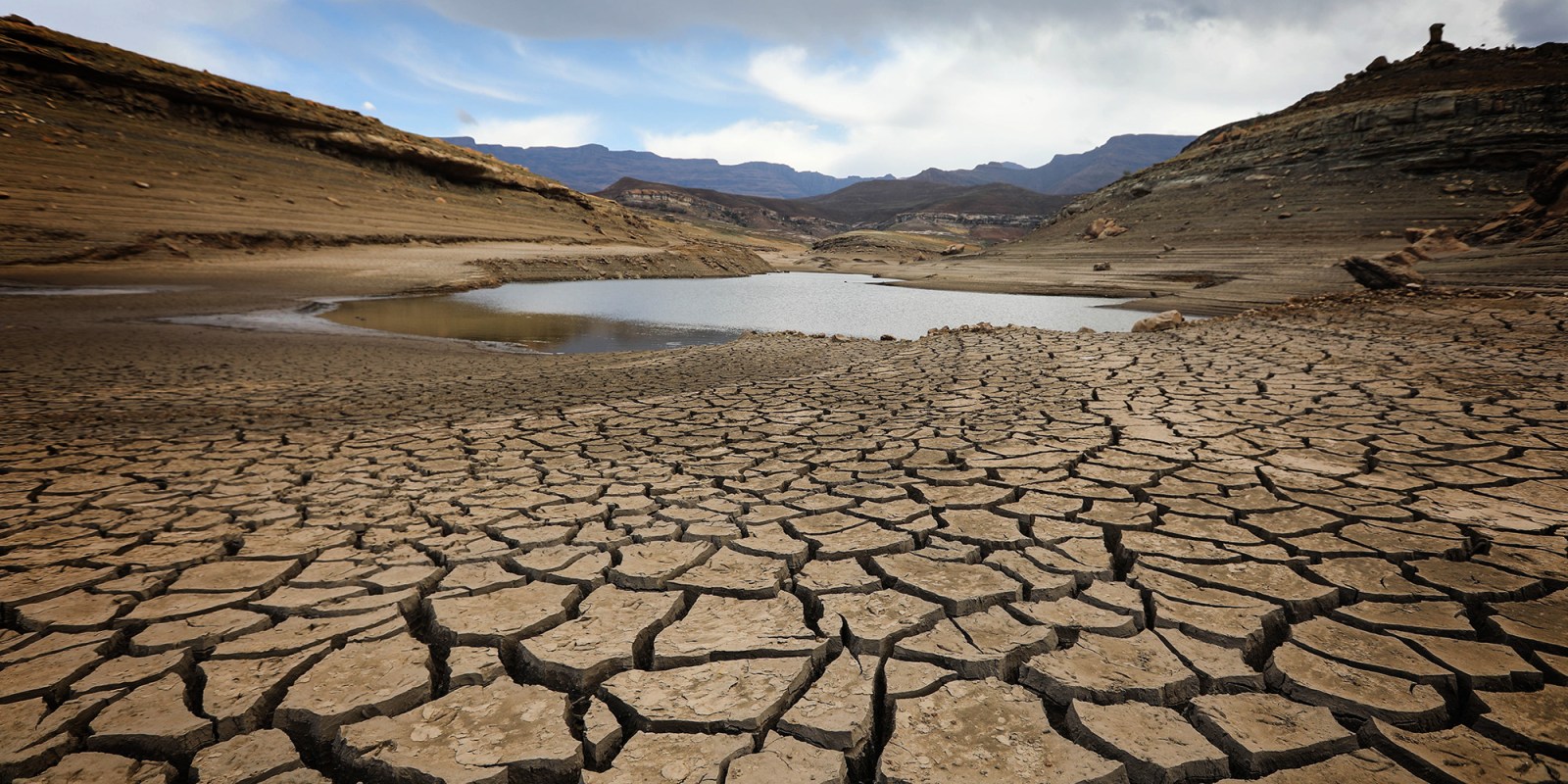
The climate crisis issue may be complex, but the solutions are not out of reach. We the people, and not governments or corporations, are the force that needs to steer civilisation on to the road to a sustainable future, as the young Swedish activist Greta Thunberg constantly reminds us. (Photo: Alaister Russell / The Sunday Times)
By Don Pinnock | 10 Apr 2022
At some point in reporting on the climate crisis it became received wisdom worldwide that we should dial back on gloom or you, the reader, will turn away and ignore the problem. Frankly, that’s insulting.
______________________________________________________________________________________________________________________
We need to tell it like it is: humanity is running an ecological Ponzi scheme in which we rob nature and future generations to pay for boosting incomes in the short term.
The fabric we call civilisation is in danger of unravelling faster than you might imagine and we’re being misled by bullshit. If we don’t stop now, we’re screwed.
The world stage upon which actors wring their hands in concern is a depressing show. Vastly expensive conferences like COP26 elicit empty promises to head to carbon-neutral, based on little more than hope. Polluting corporations embrace carbon credits that allow them to pollute and make empty promises about transitioning away from oil and coal.
Governments pay lip service to crisis preparation, but adopt a wait-and-see attitude. A little bit is gained in saving some species, a lot is lost elsewhere.
Through it all, humanity is causing a rapid loss of biodiversity and, with it, Earth’s ability to support complex life. Yet it’s difficult to grasp the magnitude of this loss, despite the steady erosion of the fabric of human civilisation.
The science underlying these issues is strong, but awareness is weak. It’s time to take stock. In comparison to rolling changes to planetary systems, Ukraine is a sideshow.
Since agriculture began 11,000 years ago, we have halved the biomass of Earth’s vegetation. Three-quarters of the planet’s large rivers no longer reach the sea. Of all the vertebrates (creatures with spines), 59% are our livestock, 36% are humans, and wild creatures are just 3%. We have lost around a third of all the large fish in the oceans.
In the past 500 years, more than 700 creatures and 600 plants have gone extinct and over a million species are at risk — and those are just the ones we know about. In the past 50 years, populations of non-domestic animals have dropped by 68% and 40% of all plants are considered at risk. We’re super-stressing the planet and heading for the sixth mass extinction. Take a look at this:
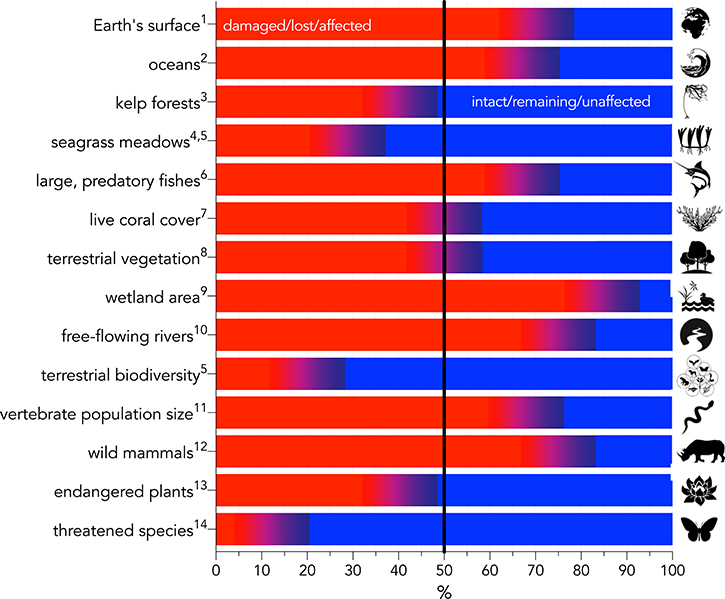
The problem isn’t so much that we pump out CO2, but that we do so while devastating the living systems — termed ecosystem services — that have the ability to sequester and neutralise it.
Stopping biodiversity loss is nowhere near the top of any country’s priorities, far behind other concerns such as employment, healthcare, economic growth or currency stability. Most of the nature-related United Nations Sustainable Development Goals are on track for failure. Even the World Economic Forum, which is often the captive of dangerous greenwashing propaganda, now recognises biodiversity loss as one of the top threats to the global economy.
What the Covid pandemic should have taught us is the danger of raiding ever-wilder areas for food, much of which is taking place in biodiversity hotspots where pathogen diversity is highest, but institutional capacity weakest.
Three quarters of new infectious diseases result from human-animal interactions, environmental degradation via climate change, deforestation, intensive farming, bushmeat hunting and an exploding trade in wildlife.
Meanwhile, the temperature keeps rising. Even assuming that all signatories to international climate treaties manage to ratify their commitments (a doubtful prospect), expected warming is still likely to reach 2.6-3.1°C by 2100 unless large, additional commitments are made and fulfilled. Without such commitments, the projected rise of Earth’s temperature will be catastrophic for biodiversity and humanity.
At great risk are the miombo woodlands of southern Africa, home to iconic animals such as elephants, lions, leopards, spotted hyenas, buffalo, antelope and giraffes. This vast area is becoming a less hospitable habitat. Rainfall is now more sporadic and intense, while the shifting climate threatens to increase wildfires that decimate wildlife.
According to Jeff Price, a climate scientist at the University of East Anglia who has studied the region, even a 1.5°C warming would make the area unsuitable for up to half of all species there.
This is playing out against another shift: the countries of the miombo are experiencing rapid population growth, contributing to the loss of the woodlands, which have shrunk by an estimated 30% since the 1980s.
This highlights the elephant in the room that keeps getting avoided in debates for fear of offending: overpopulation. A human is born somewhere on Earth every 45 seconds. Since the day I was born the world’s population has trebled. Much of the increase has been in Africa.
While the population of some countries has stopped growing or even declined, in sub-Saharan Africa the average is 4.8 children per woman. At this rate the population there will double every 30 years.
This is completely unsustainable on every level, not least because large populations and their continued growth are drivers of soil degradation and biodiversity loss. Population growth is also a factor in many social ills, from crowding, joblessness and migration to deteriorating infrastructure and bad governance.
Humanity’s consumption as a percentage of Earth’s regenerative capacity is about 170%. In other words, we’re consuming nearly twice what the planet can generate, with substantially greater consumption in the countries with the highest incomes.
There’s a reason for this and it has to do with our success as a species. The population of any species is governed by its food supply. This limited the number of humans on Earth until the 20th century. The massive population overshoot since the Industrial Revolution was largely enabled by the increasing use of fossil fuels. These convenient fuels allowed us to decouple human demand from simple biological regeneration.
Now every unit of food energy produced requires a multiple in fossil-fuel energy. This, coupled with the increasing consumption of carbon-intensive meat by the rising middle class has exploded the global carbon footprint of agriculture.
So what needs to change?
Everything as we know it. The gravity of the situation requires fundamental changes to global capitalism, education and equality, the abolition of perpetual economic growth, properly pricing the value added by nature, a rapid exit from fossil-fuel use, strict regulation of markets, reining in corporate lobbying and the empowerment of women.
This is going to entail difficult conversations about population growth and the shift to lower, but more equitable standards of living by wealthy countries.
Scientists, politicians and journalists need to avoid sugar-coating the overwhelming challenges ahead and tell it like it is. Anything else is misleading at best, or negligent and potentially lethal for the human enterprise at worst.
Did that scare you away from thinking about climate change? Of course not. I’m sure it just made you want to know how you can avoid being part of the problem and what actions you can personally take for us to move to a more sustainable future.
The issue may be complex, but the solutions are not out of reach. We the people, and not governments or corporations, are the force that needs to steer civilisation on to the road to a sustainable future, as the young Swedish activist Greta Thunberg constantly reminds us.
It’s essential and doable, so here’s a checklist. Back in 1971, community activist Saul Alinsky developed guidelines for ordinary people to make change happen. They’re still good to go:
Time to take off the climate crisis blinkers and accept that everything as we know it needs to change

The climate crisis issue may be complex, but the solutions are not out of reach. We the people, and not governments or corporations, are the force that needs to steer civilisation on to the road to a sustainable future, as the young Swedish activist Greta Thunberg constantly reminds us. (Photo: Alaister Russell / The Sunday Times)
By Don Pinnock | 10 Apr 2022
At some point in reporting on the climate crisis it became received wisdom worldwide that we should dial back on gloom or you, the reader, will turn away and ignore the problem. Frankly, that’s insulting.
______________________________________________________________________________________________________________________
We need to tell it like it is: humanity is running an ecological Ponzi scheme in which we rob nature and future generations to pay for boosting incomes in the short term.
The fabric we call civilisation is in danger of unravelling faster than you might imagine and we’re being misled by bullshit. If we don’t stop now, we’re screwed.
The world stage upon which actors wring their hands in concern is a depressing show. Vastly expensive conferences like COP26 elicit empty promises to head to carbon-neutral, based on little more than hope. Polluting corporations embrace carbon credits that allow them to pollute and make empty promises about transitioning away from oil and coal.
Governments pay lip service to crisis preparation, but adopt a wait-and-see attitude. A little bit is gained in saving some species, a lot is lost elsewhere.
Through it all, humanity is causing a rapid loss of biodiversity and, with it, Earth’s ability to support complex life. Yet it’s difficult to grasp the magnitude of this loss, despite the steady erosion of the fabric of human civilisation.
The science underlying these issues is strong, but awareness is weak. It’s time to take stock. In comparison to rolling changes to planetary systems, Ukraine is a sideshow.
Since agriculture began 11,000 years ago, we have halved the biomass of Earth’s vegetation. Three-quarters of the planet’s large rivers no longer reach the sea. Of all the vertebrates (creatures with spines), 59% are our livestock, 36% are humans, and wild creatures are just 3%. We have lost around a third of all the large fish in the oceans.
In the past 500 years, more than 700 creatures and 600 plants have gone extinct and over a million species are at risk — and those are just the ones we know about. In the past 50 years, populations of non-domestic animals have dropped by 68% and 40% of all plants are considered at risk. We’re super-stressing the planet and heading for the sixth mass extinction. Take a look at this:

The problem isn’t so much that we pump out CO2, but that we do so while devastating the living systems — termed ecosystem services — that have the ability to sequester and neutralise it.
Stopping biodiversity loss is nowhere near the top of any country’s priorities, far behind other concerns such as employment, healthcare, economic growth or currency stability. Most of the nature-related United Nations Sustainable Development Goals are on track for failure. Even the World Economic Forum, which is often the captive of dangerous greenwashing propaganda, now recognises biodiversity loss as one of the top threats to the global economy.
What the Covid pandemic should have taught us is the danger of raiding ever-wilder areas for food, much of which is taking place in biodiversity hotspots where pathogen diversity is highest, but institutional capacity weakest.
Three quarters of new infectious diseases result from human-animal interactions, environmental degradation via climate change, deforestation, intensive farming, bushmeat hunting and an exploding trade in wildlife.
Meanwhile, the temperature keeps rising. Even assuming that all signatories to international climate treaties manage to ratify their commitments (a doubtful prospect), expected warming is still likely to reach 2.6-3.1°C by 2100 unless large, additional commitments are made and fulfilled. Without such commitments, the projected rise of Earth’s temperature will be catastrophic for biodiversity and humanity.
At great risk are the miombo woodlands of southern Africa, home to iconic animals such as elephants, lions, leopards, spotted hyenas, buffalo, antelope and giraffes. This vast area is becoming a less hospitable habitat. Rainfall is now more sporadic and intense, while the shifting climate threatens to increase wildfires that decimate wildlife.
According to Jeff Price, a climate scientist at the University of East Anglia who has studied the region, even a 1.5°C warming would make the area unsuitable for up to half of all species there.
This is playing out against another shift: the countries of the miombo are experiencing rapid population growth, contributing to the loss of the woodlands, which have shrunk by an estimated 30% since the 1980s.
This highlights the elephant in the room that keeps getting avoided in debates for fear of offending: overpopulation. A human is born somewhere on Earth every 45 seconds. Since the day I was born the world’s population has trebled. Much of the increase has been in Africa.
While the population of some countries has stopped growing or even declined, in sub-Saharan Africa the average is 4.8 children per woman. At this rate the population there will double every 30 years.
This is completely unsustainable on every level, not least because large populations and their continued growth are drivers of soil degradation and biodiversity loss. Population growth is also a factor in many social ills, from crowding, joblessness and migration to deteriorating infrastructure and bad governance.
Humanity’s consumption as a percentage of Earth’s regenerative capacity is about 170%. In other words, we’re consuming nearly twice what the planet can generate, with substantially greater consumption in the countries with the highest incomes.
There’s a reason for this and it has to do with our success as a species. The population of any species is governed by its food supply. This limited the number of humans on Earth until the 20th century. The massive population overshoot since the Industrial Revolution was largely enabled by the increasing use of fossil fuels. These convenient fuels allowed us to decouple human demand from simple biological regeneration.
Now every unit of food energy produced requires a multiple in fossil-fuel energy. This, coupled with the increasing consumption of carbon-intensive meat by the rising middle class has exploded the global carbon footprint of agriculture.
So what needs to change?
Everything as we know it. The gravity of the situation requires fundamental changes to global capitalism, education and equality, the abolition of perpetual economic growth, properly pricing the value added by nature, a rapid exit from fossil-fuel use, strict regulation of markets, reining in corporate lobbying and the empowerment of women.
This is going to entail difficult conversations about population growth and the shift to lower, but more equitable standards of living by wealthy countries.
Scientists, politicians and journalists need to avoid sugar-coating the overwhelming challenges ahead and tell it like it is. Anything else is misleading at best, or negligent and potentially lethal for the human enterprise at worst.
Did that scare you away from thinking about climate change? Of course not. I’m sure it just made you want to know how you can avoid being part of the problem and what actions you can personally take for us to move to a more sustainable future.
The issue may be complex, but the solutions are not out of reach. We the people, and not governments or corporations, are the force that needs to steer civilisation on to the road to a sustainable future, as the young Swedish activist Greta Thunberg constantly reminds us.
It’s essential and doable, so here’s a checklist. Back in 1971, community activist Saul Alinsky developed guidelines for ordinary people to make change happen. They’re still good to go:
- Power is not only what you have but what the enemy thinks you have.
- Never go outside the expertise of your people.
- Whenever possible go outside the expertise of the enemy.
- Make the enemy live up to its own book of rules.
- Ridicule is your most potent weapon. There’s no defence. It is almost impossible to counterattack ridicule. Also, it infuriates the opposition, who then react to your advantage.
- A good tactic is one your people enjoy.
- A tactic that drags on too long becomes a drag.
- Keep the pressure on.
- The threat is usually more terrifying than the thing itself.
- The major premise for tactics is the development of operations that will maintain constant pressure upon the opposition.
- If you push a negative too hard it will break through into its counter-side. This is based on the principle that every positive has its negative.
- The price of a successful attack is a constructive alternative.
- Pick the target, freeze it, personalise it and polarise it. When all else fails, dig shit.
"Education is the most powerful weapon which you can use to change the world." Nelson Mandela
The desire for equality must never exceed the demands of knowledge
The desire for equality must never exceed the demands of knowledge
- Lisbeth
- Site Admin
- Posts: 67571
- Joined: Sat May 19, 2012 12:31 pm
- Country: Switzerland
- Location: Lugano
- Contact:
Re: Climate Change & Biodiversity Loss
Hotter Kalahari desert may stop hornbills breeding by 2027
Published: May 31, 2022 | Nicholas B. Pattinson, Doctoral student FitzPatrick Institute of African Ornithology, University of Cape Town.
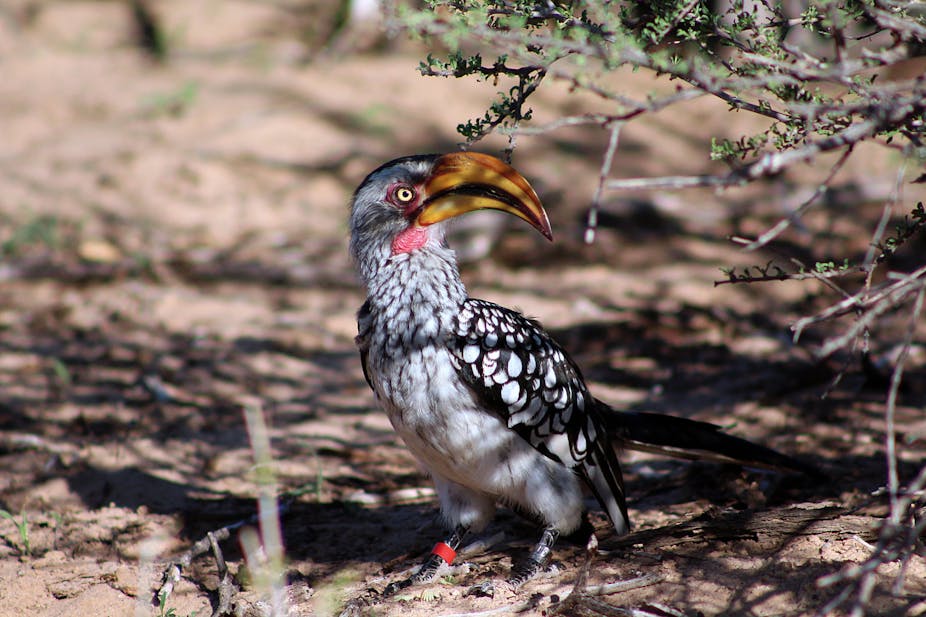
Southern Yellow-billed Hornbills struggled to breed at high temperatures. Nicholas B. Pattinson
Rapid climate change has the potential to strongly influence the physiology, behaviour and breeding success of animals. Research is showing that increasing temperatures, for instance, are having negative effects on animals. These range from mass die-off events during heat waves to less obvious problems like difficulty finding food.
For birds in arid zones, rising temperatures pose a significant problem. Birds in these dry zones usually breed in response to rainfall, which often occurs during the hottest time of the year. And birds are mostly active during the day, when they are exposed to the sun’s heat. This is when their vital processes for reproduction take place – such as territorial defence, courtship, finding food for their young and attending the nest.
Research suggests that high temperatures over a few days or weeks can have negative effects on foraging and body mass. At the scale of one or two breeding seasons, these effects have a negative impact on breeding performance. This can be through reducing the condition of offspring or the probability that young birds will survive to adulthood and breed.
The longer-term effects of responses to high temperatures – over decades – are less well-known.
Our recent research aimed to help bridge this gap in knowledge. We assessed the effects of air temperature and drought on the breeding output of southern yellow-billed hornbills (Tockus leucomelas) in southern Africa’s Kalahari Desert over a decade period, from 2008 to 2019.
We found that the breeding output of our study population collapsed during the monitoring period and was strongly correlated with temperature and rainfall. In the Kalahari, air temperatures have already risen more than 2°C in a few decades. At this rate, by 2027, these birds will not breed at all at this site.
Desert temperatures and breeding birds
First we examined air temperature and rainfall data from the South African Weather Service for the Kalahari region between 1960 and 2020. The frequency and severity of drought have not changed but spring and summer average daily maximum air temperatures have been increasing. They have risen from about 34°C to well over 36°C from the mid 1990s to the present day. [This is from our paper] This equates to a warming rate of about 1°C per decade, a rate five times faster than the worldwide average of about 0.2°C per decade.
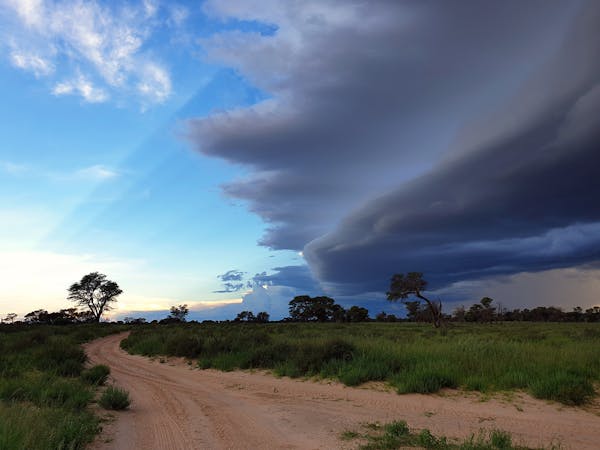
In the Kalahari, average spring and summer air temperatures have already risen more than 2°C since temperatures began rising. Nicholas B. Pattinson
We then assessed the effects of air temperature and drought on the breeding output of a population of southern yellow-billed hornbills in the Kalahari over the decade 2008 to 2019. These birds are still common across much of central and eastern southern Africa.
The study population comprised about 25 pairs each breeding season. These hornbills nest in cavities and at our study site pairs usually made one breeding attempt per season. Their breeding strategy is unusual: the female seals herself inside the nest cavity and moults all her flight feathers. This leaves the male parent as the sole provisioner to the nest for the female parent and the chicks. A successful breeding attempt usually takes about two months, with a pair raising between one and four chicks.
Although the number of pairs at the site remained constant over the study decade, more pairs skipped breeding each year. And those which did breed did so less and less successfully, producing fewer offspring or none at all.
Comparing the first three seasons (2008-2011) of monitoring to the last three (2016-2019), the mean percentage of nest boxes occupied declined from 52% to 12%. Nest success – a breeding attempt successfully raising at least one chick – fell from 58% to 17%. Fledglings produced per breeding attempt declined from 1.1 to 0.4.
Without successful breeding, the population will not be able to persist, and will quickly become locally extinct.
We found that breeding output was negatively correlated with increasing air temperatures and the occurrence of drought within the breeding season. Breeding attempts all failed when average daily maximum air temperatures exceeded 35.7°C. And the effects of high air temperatures were present even in non-drought years.
Considering the strong negative correlation between high air temperature and breeding output, we argue that global warming has likely been the primary driver of the recent, rapid collapse in breeding success in our study population. The consequences of high air temperatures (regardless of high rainfall) and drought on the parents affect the probability of successfully fledging offspring or even attempting to breed at all.
Based on current warming trends, the 35.7°C threshold for successful breeding attempts will be exceeded for the entire hornbill breeding season by approximately 2027 at our study site.
Overall, while our study is specific to southern yellow-billed hornbills, we suggest that our findings are likely applicable to a range of species. Even for species that are unlikely to die in large numbers because of heat, climate change can drive rapid declines and potentially local extinctions.
What we can do about it
Luckily, a few mitigation strategies are still available to help prevent local and global extinctions.
In the short term, there are options such as providing water and insulated nest boxes.
Long-term, it would be necessary to preserve habitats which warm less rapidly or which can buffer the effects of climate change on biodiversity.
Even preservation of habitat won’t be enough, however, if the current rate of climate change is sustained. Recent models based on current rates of warming and what’s known about how birds handle heat are suggesting that rare and endangered species will be lost over the next century. But so will species which are currently common, such as the southern yellow-billed hornbill.
Published: May 31, 2022 | Nicholas B. Pattinson, Doctoral student FitzPatrick Institute of African Ornithology, University of Cape Town.

Southern Yellow-billed Hornbills struggled to breed at high temperatures. Nicholas B. Pattinson
Rapid climate change has the potential to strongly influence the physiology, behaviour and breeding success of animals. Research is showing that increasing temperatures, for instance, are having negative effects on animals. These range from mass die-off events during heat waves to less obvious problems like difficulty finding food.
For birds in arid zones, rising temperatures pose a significant problem. Birds in these dry zones usually breed in response to rainfall, which often occurs during the hottest time of the year. And birds are mostly active during the day, when they are exposed to the sun’s heat. This is when their vital processes for reproduction take place – such as territorial defence, courtship, finding food for their young and attending the nest.
Research suggests that high temperatures over a few days or weeks can have negative effects on foraging and body mass. At the scale of one or two breeding seasons, these effects have a negative impact on breeding performance. This can be through reducing the condition of offspring or the probability that young birds will survive to adulthood and breed.
The longer-term effects of responses to high temperatures – over decades – are less well-known.
Our recent research aimed to help bridge this gap in knowledge. We assessed the effects of air temperature and drought on the breeding output of southern yellow-billed hornbills (Tockus leucomelas) in southern Africa’s Kalahari Desert over a decade period, from 2008 to 2019.
We found that the breeding output of our study population collapsed during the monitoring period and was strongly correlated with temperature and rainfall. In the Kalahari, air temperatures have already risen more than 2°C in a few decades. At this rate, by 2027, these birds will not breed at all at this site.
Desert temperatures and breeding birds
First we examined air temperature and rainfall data from the South African Weather Service for the Kalahari region between 1960 and 2020. The frequency and severity of drought have not changed but spring and summer average daily maximum air temperatures have been increasing. They have risen from about 34°C to well over 36°C from the mid 1990s to the present day. [This is from our paper] This equates to a warming rate of about 1°C per decade, a rate five times faster than the worldwide average of about 0.2°C per decade.

In the Kalahari, average spring and summer air temperatures have already risen more than 2°C since temperatures began rising. Nicholas B. Pattinson
We then assessed the effects of air temperature and drought on the breeding output of a population of southern yellow-billed hornbills in the Kalahari over the decade 2008 to 2019. These birds are still common across much of central and eastern southern Africa.
The study population comprised about 25 pairs each breeding season. These hornbills nest in cavities and at our study site pairs usually made one breeding attempt per season. Their breeding strategy is unusual: the female seals herself inside the nest cavity and moults all her flight feathers. This leaves the male parent as the sole provisioner to the nest for the female parent and the chicks. A successful breeding attempt usually takes about two months, with a pair raising between one and four chicks.
Although the number of pairs at the site remained constant over the study decade, more pairs skipped breeding each year. And those which did breed did so less and less successfully, producing fewer offspring or none at all.
Comparing the first three seasons (2008-2011) of monitoring to the last three (2016-2019), the mean percentage of nest boxes occupied declined from 52% to 12%. Nest success – a breeding attempt successfully raising at least one chick – fell from 58% to 17%. Fledglings produced per breeding attempt declined from 1.1 to 0.4.
Without successful breeding, the population will not be able to persist, and will quickly become locally extinct.
We found that breeding output was negatively correlated with increasing air temperatures and the occurrence of drought within the breeding season. Breeding attempts all failed when average daily maximum air temperatures exceeded 35.7°C. And the effects of high air temperatures were present even in non-drought years.
Considering the strong negative correlation between high air temperature and breeding output, we argue that global warming has likely been the primary driver of the recent, rapid collapse in breeding success in our study population. The consequences of high air temperatures (regardless of high rainfall) and drought on the parents affect the probability of successfully fledging offspring or even attempting to breed at all.
Based on current warming trends, the 35.7°C threshold for successful breeding attempts will be exceeded for the entire hornbill breeding season by approximately 2027 at our study site.
Overall, while our study is specific to southern yellow-billed hornbills, we suggest that our findings are likely applicable to a range of species. Even for species that are unlikely to die in large numbers because of heat, climate change can drive rapid declines and potentially local extinctions.
What we can do about it
Luckily, a few mitigation strategies are still available to help prevent local and global extinctions.
In the short term, there are options such as providing water and insulated nest boxes.
Long-term, it would be necessary to preserve habitats which warm less rapidly or which can buffer the effects of climate change on biodiversity.
Even preservation of habitat won’t be enough, however, if the current rate of climate change is sustained. Recent models based on current rates of warming and what’s known about how birds handle heat are suggesting that rare and endangered species will be lost over the next century. But so will species which are currently common, such as the southern yellow-billed hornbill.
"Education is the most powerful weapon which you can use to change the world." Nelson Mandela
The desire for equality must never exceed the demands of knowledge
The desire for equality must never exceed the demands of knowledge
- Lisbeth
- Site Admin
- Posts: 67571
- Joined: Sat May 19, 2012 12:31 pm
- Country: Switzerland
- Location: Lugano
- Contact:
Re: Climate Change & Biodiversity Loss
Even temporarily overshooting 2°C would cause permanent damage to Earth’s species
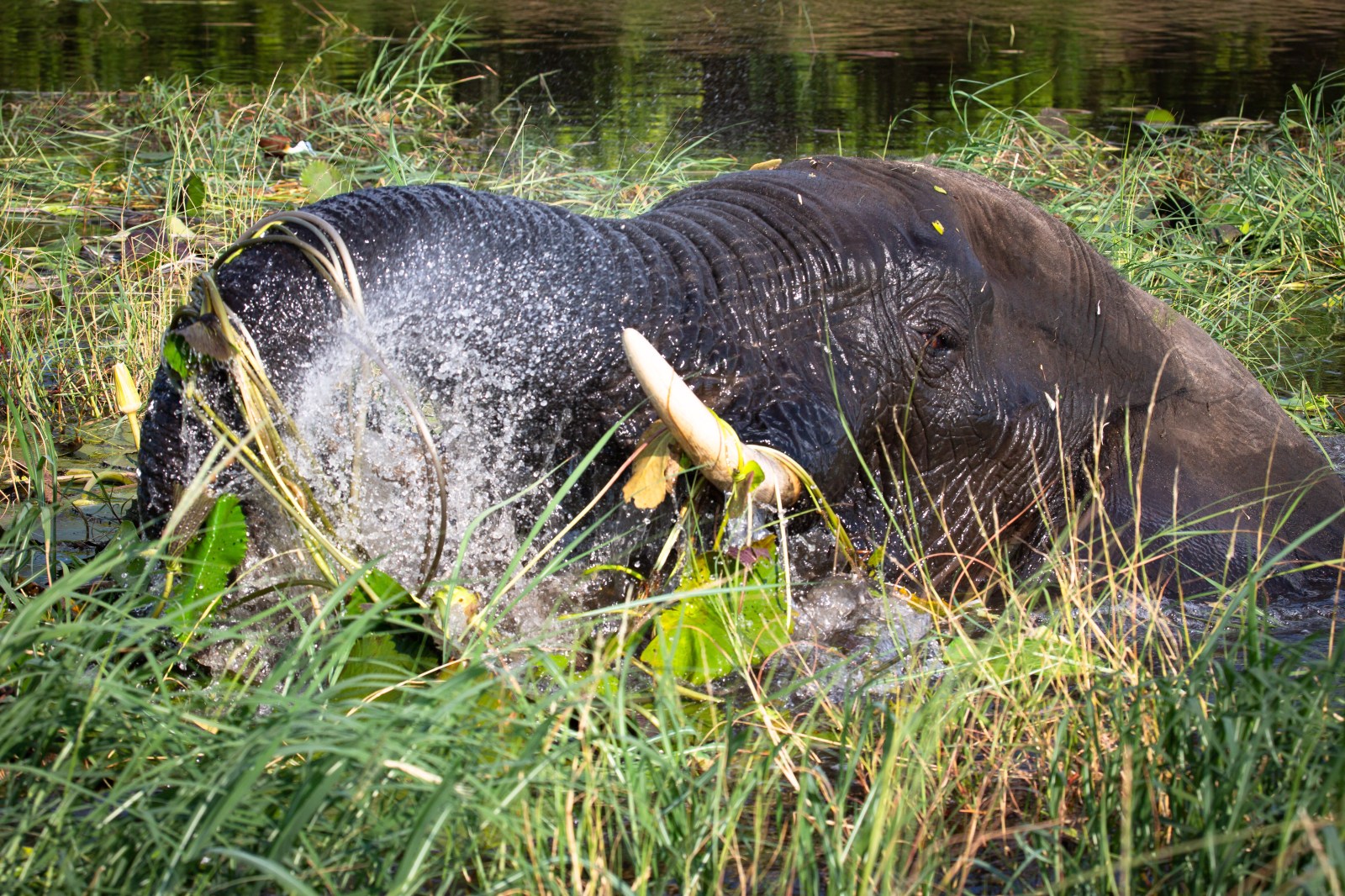
Fun in the lilies on Chobe River! Image: Melanie Black
By Joanne Bentley, Alex Pigot, Andreas LS Meyer and Christopher Trisos | 17 Jul 2022
Emissions are expected to continue heating the planet rapidly in the coming decades. Unless urgent remedial action is taken, this will equate to a death sentence for countless variants of marine and land-based life while inflicting permanent damage on others.
___________________________________________________________________________________________________________________________
The history of climate change is one of people slowly coming to terms with the truth. None but a small minority still question whether it’s real and caused by humans. Now, most grapple with the reality of trying to slow down catastrophic warming, and the difference between solutions and false hope. The concept of climate overshoot is the next thing we will need to get to grips with.
Unless urgent action is taken, emissions are expected to cause the planet to continue heating rapidly over the next few decades, prompting the global average temperature to overshoot the Paris agreement’s target, which aimed to limit warming to between 1.5°C and 2°C. A period of higher temperatures will occur in the middle of this century as a result. Then, the idea goes, new but yet unproven technologies and techniques for pulling greenhouse gases from the atmosphere will eventually bring temperatures back down to a safer level.
Until now, scientists were unsure what temporarily overshooting (and then boomeranging back below) the Paris agreement’s temperature target would entail for nature. So, for the first time, we studied the consequences of allowing Earth’s temperature to exceed these precautionary limits, then fall below them again, for marine and land-based life. In other words, we looked at how damaging the journey of overshooting the 2°C temperature target would be, and not just the destination itself.
The results suggest that a temporary overshoot would cause waves of irreversible extinctions and lasting damage to tens of thousands of species. This is what the world can expect if humanity fails to make deep emission cuts this decade, and relies instead on future technologies to remove emissions later.
Harm arrives fast and leaves slowly
Our study modelled the impact of global temperatures exceeding 2°C for around 60 years between 2040 and 2100 on over 30,000 species that live on land and in the sea. We looked at how many of them would be exposed to temperatures that could hinder their reproduction and survival, and how much time they would be exposed to this risk.
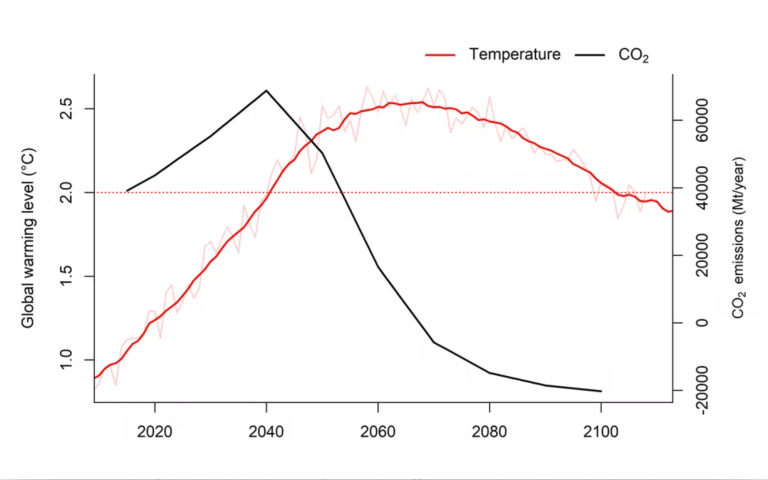
In this scenario in which the world overshoots the 2°C targets, emissions do not peak until 2040. Meyer et al. (2022), Author provided
Harm would be fast to arrive and slow to disappear for nature, even after temperatures fall again. Just a few years of global temperatures above 2°C could transform the world’s most important ecosystems. Take the Amazon basin, for example. Some species would remain exposed to dangerous conditions long after the global average temperature stabilised — with some remaining exposed as late as 2300. This is because some species, especially those in the tropics, live closer to the limit of heat they can tolerate and so are sensitive to relatively small changes in temperature. And while global average temperatures may return to safer levels eventually, local temperature changes might lag behind.
The consequences of this exposure could be irreversible and include the tropical forest turning into savanna. The world would lose a critical global carbon sink, leaving more planet-warming gases in the atmosphere.
The Coral Triangle in the western Pacific Ocean is one of the most species-rich marine ecosystems and home to many reef-building corals, sea turtles, reef fish and mangrove forests. Our modelling showed that in some communities, all or most of the species would be exposed to dangerous conditions simultaneously for at least a few decades and as much as two centuries. As well as disrupting a source of food for millions of people, disappearing corals and mangroves would remove a natural barrier protecting coastal towns and villages from rising seas and worsening storms.
No way home
The consequences of overshooting 2°C for the survival of species have been neglected by policymakers. Our analysis indicates that it cannot be assumed that life will simply recover once temperatures fall below 2°C again. We found that 3,953 species will have their entire population exposed to temperatures outside the range they evolved in for more than 60 consecutive years. The Philippine porcupine will be exposed for 99 years, and the Mawa clawed frog for an astonishing 157 years. Surviving this length of exposure is a stern challenge for any species.
Relying on carbon dioxide removal and so-called negative emissions technologies to lower greenhouse gases in the atmosphere over several decades is too risky to contemplate. Some of this technology, like carbon capture and storage, hasn’t yet been shown to work at the scale needed. Other techniques have negative effects on nature, such as bioenergy, where trees or crops are grown and then burned to generate electricity. Rolling out vast plantations at the same time as temperatures overshoot the internationally agreed “safe” limit would leave species reeling from a hotter climate and shrinking natural habitat.
Delaying drastic cuts to emissions will mean the world overshooting 2°C is a best-case scenario. This overshoot would come at an astronomical cost to life on Earth that negative emission technologies will not reverse. The effort to stop temperatures rising isn’t an abstract attempt at bending curves on a graph: it’s a fight for a liveable planet. DM
First published by The Conversation.
Joanne Bentley is a postdoctoral researcher in Molecular Ecology, African Climate & Development Initiative at the University of Cape Town. Alex Pigot is a Research Fellow in Genetics, Evolution & Environment Division of Biosciences at UCL. Andreas LS Meyer is a Postdoctoral Research Fellow in Ecology & Evolutionary Biology at the University of Cape Town. Christopher Trisos is a Senior Research Fellow in Climate Change Risks, University of Cape Town.

Fun in the lilies on Chobe River! Image: Melanie Black
By Joanne Bentley, Alex Pigot, Andreas LS Meyer and Christopher Trisos | 17 Jul 2022
Emissions are expected to continue heating the planet rapidly in the coming decades. Unless urgent remedial action is taken, this will equate to a death sentence for countless variants of marine and land-based life while inflicting permanent damage on others.
___________________________________________________________________________________________________________________________
The history of climate change is one of people slowly coming to terms with the truth. None but a small minority still question whether it’s real and caused by humans. Now, most grapple with the reality of trying to slow down catastrophic warming, and the difference between solutions and false hope. The concept of climate overshoot is the next thing we will need to get to grips with.
Unless urgent action is taken, emissions are expected to cause the planet to continue heating rapidly over the next few decades, prompting the global average temperature to overshoot the Paris agreement’s target, which aimed to limit warming to between 1.5°C and 2°C. A period of higher temperatures will occur in the middle of this century as a result. Then, the idea goes, new but yet unproven technologies and techniques for pulling greenhouse gases from the atmosphere will eventually bring temperatures back down to a safer level.
Until now, scientists were unsure what temporarily overshooting (and then boomeranging back below) the Paris agreement’s temperature target would entail for nature. So, for the first time, we studied the consequences of allowing Earth’s temperature to exceed these precautionary limits, then fall below them again, for marine and land-based life. In other words, we looked at how damaging the journey of overshooting the 2°C temperature target would be, and not just the destination itself.
The results suggest that a temporary overshoot would cause waves of irreversible extinctions and lasting damage to tens of thousands of species. This is what the world can expect if humanity fails to make deep emission cuts this decade, and relies instead on future technologies to remove emissions later.
Harm arrives fast and leaves slowly
Our study modelled the impact of global temperatures exceeding 2°C for around 60 years between 2040 and 2100 on over 30,000 species that live on land and in the sea. We looked at how many of them would be exposed to temperatures that could hinder their reproduction and survival, and how much time they would be exposed to this risk.

In this scenario in which the world overshoots the 2°C targets, emissions do not peak until 2040. Meyer et al. (2022), Author provided
Harm would be fast to arrive and slow to disappear for nature, even after temperatures fall again. Just a few years of global temperatures above 2°C could transform the world’s most important ecosystems. Take the Amazon basin, for example. Some species would remain exposed to dangerous conditions long after the global average temperature stabilised — with some remaining exposed as late as 2300. This is because some species, especially those in the tropics, live closer to the limit of heat they can tolerate and so are sensitive to relatively small changes in temperature. And while global average temperatures may return to safer levels eventually, local temperature changes might lag behind.
The consequences of this exposure could be irreversible and include the tropical forest turning into savanna. The world would lose a critical global carbon sink, leaving more planet-warming gases in the atmosphere.
The Coral Triangle in the western Pacific Ocean is one of the most species-rich marine ecosystems and home to many reef-building corals, sea turtles, reef fish and mangrove forests. Our modelling showed that in some communities, all or most of the species would be exposed to dangerous conditions simultaneously for at least a few decades and as much as two centuries. As well as disrupting a source of food for millions of people, disappearing corals and mangroves would remove a natural barrier protecting coastal towns and villages from rising seas and worsening storms.
No way home
The consequences of overshooting 2°C for the survival of species have been neglected by policymakers. Our analysis indicates that it cannot be assumed that life will simply recover once temperatures fall below 2°C again. We found that 3,953 species will have their entire population exposed to temperatures outside the range they evolved in for more than 60 consecutive years. The Philippine porcupine will be exposed for 99 years, and the Mawa clawed frog for an astonishing 157 years. Surviving this length of exposure is a stern challenge for any species.
Relying on carbon dioxide removal and so-called negative emissions technologies to lower greenhouse gases in the atmosphere over several decades is too risky to contemplate. Some of this technology, like carbon capture and storage, hasn’t yet been shown to work at the scale needed. Other techniques have negative effects on nature, such as bioenergy, where trees or crops are grown and then burned to generate electricity. Rolling out vast plantations at the same time as temperatures overshoot the internationally agreed “safe” limit would leave species reeling from a hotter climate and shrinking natural habitat.
Delaying drastic cuts to emissions will mean the world overshooting 2°C is a best-case scenario. This overshoot would come at an astronomical cost to life on Earth that negative emission technologies will not reverse. The effort to stop temperatures rising isn’t an abstract attempt at bending curves on a graph: it’s a fight for a liveable planet. DM
First published by The Conversation.
Joanne Bentley is a postdoctoral researcher in Molecular Ecology, African Climate & Development Initiative at the University of Cape Town. Alex Pigot is a Research Fellow in Genetics, Evolution & Environment Division of Biosciences at UCL. Andreas LS Meyer is a Postdoctoral Research Fellow in Ecology & Evolutionary Biology at the University of Cape Town. Christopher Trisos is a Senior Research Fellow in Climate Change Risks, University of Cape Town.
"Education is the most powerful weapon which you can use to change the world." Nelson Mandela
The desire for equality must never exceed the demands of knowledge
The desire for equality must never exceed the demands of knowledge
- Lisbeth
- Site Admin
- Posts: 67571
- Joined: Sat May 19, 2012 12:31 pm
- Country: Switzerland
- Location: Lugano
- Contact:
Re: Climate Change & Biodiversity Loss
Rocky path revealed between Swiss glaciers in extreme melt season
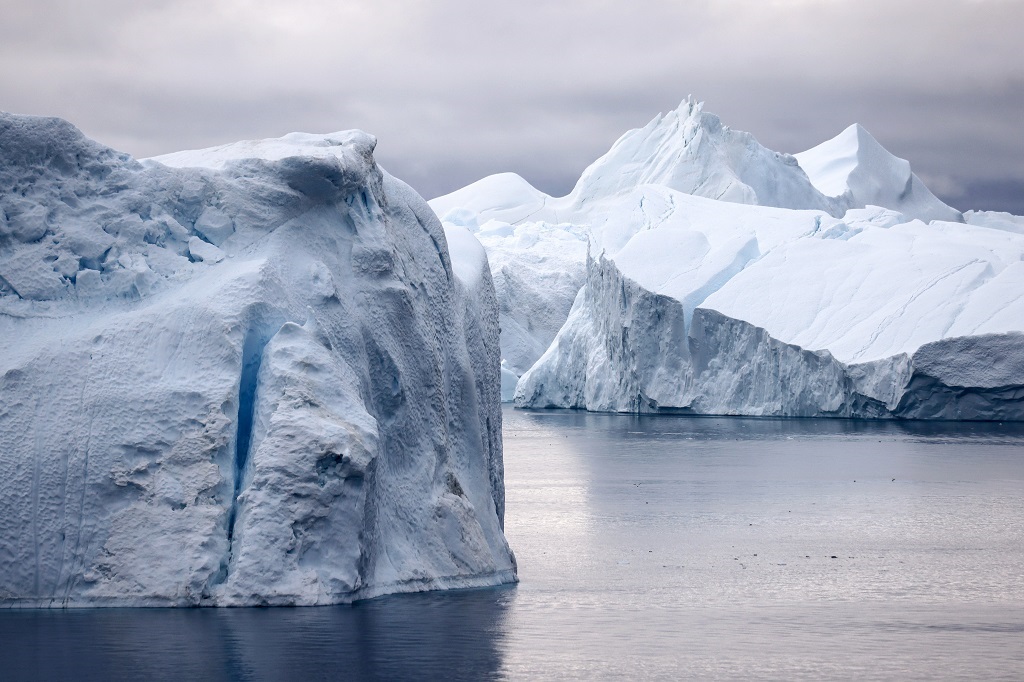
This year's ice melt was around three times the 10-year average, according to a ski resort in Switzerland.
Mario Tama
A rocky Alpine path between two glaciers in Switzerland is emerging for what the local ski resort says is the first time in at least 2 000 years after the hottest European summer on record.
The ski resort of Glacier 3000 in western Switzerland said this year's ice melt was around three times the 10-year average, meaning bare rock can now be seen between the Scex Rouge and the Zanfleuron glaciers at an altitude of 2 800 metres and the pass will be completely exposed by the end of this month.
"About 10 years ago I measured 15 metres of ice here so all that ice has melted in the meantime," said Mauro Fischer, a glaciologist at the University of Bern's Institute of Geography.
"What we saw this year and this summer is just extraordinary and it's really beyond everything we have ever measured so far," he added, referring to the speed at which the ice has melted.
Since last winter, which brought relatively little snowfall, the Alps have sweltered through two big early summer heatwaves. The Alps' glaciers are now on track for their biggest mass losses in at least 60 years of record-keeping, data showed.

This year's ice melt was around three times the 10-year average, according to a ski resort in Switzerland.
Mario Tama
A rocky Alpine path between two glaciers in Switzerland is emerging for what the local ski resort says is the first time in at least 2 000 years after the hottest European summer on record.
The ski resort of Glacier 3000 in western Switzerland said this year's ice melt was around three times the 10-year average, meaning bare rock can now be seen between the Scex Rouge and the Zanfleuron glaciers at an altitude of 2 800 metres and the pass will be completely exposed by the end of this month.
"About 10 years ago I measured 15 metres of ice here so all that ice has melted in the meantime," said Mauro Fischer, a glaciologist at the University of Bern's Institute of Geography.
"What we saw this year and this summer is just extraordinary and it's really beyond everything we have ever measured so far," he added, referring to the speed at which the ice has melted.
Since last winter, which brought relatively little snowfall, the Alps have sweltered through two big early summer heatwaves. The Alps' glaciers are now on track for their biggest mass losses in at least 60 years of record-keeping, data showed.
"Education is the most powerful weapon which you can use to change the world." Nelson Mandela
The desire for equality must never exceed the demands of knowledge
The desire for equality must never exceed the demands of knowledge
- Lisbeth
- Site Admin
- Posts: 67571
- Joined: Sat May 19, 2012 12:31 pm
- Country: Switzerland
- Location: Lugano
- Contact:
Re: Climate Change & Biodiversity Loss
Earth’s hidden climate-change tipping point is under our feet — and we’ve overstepped it
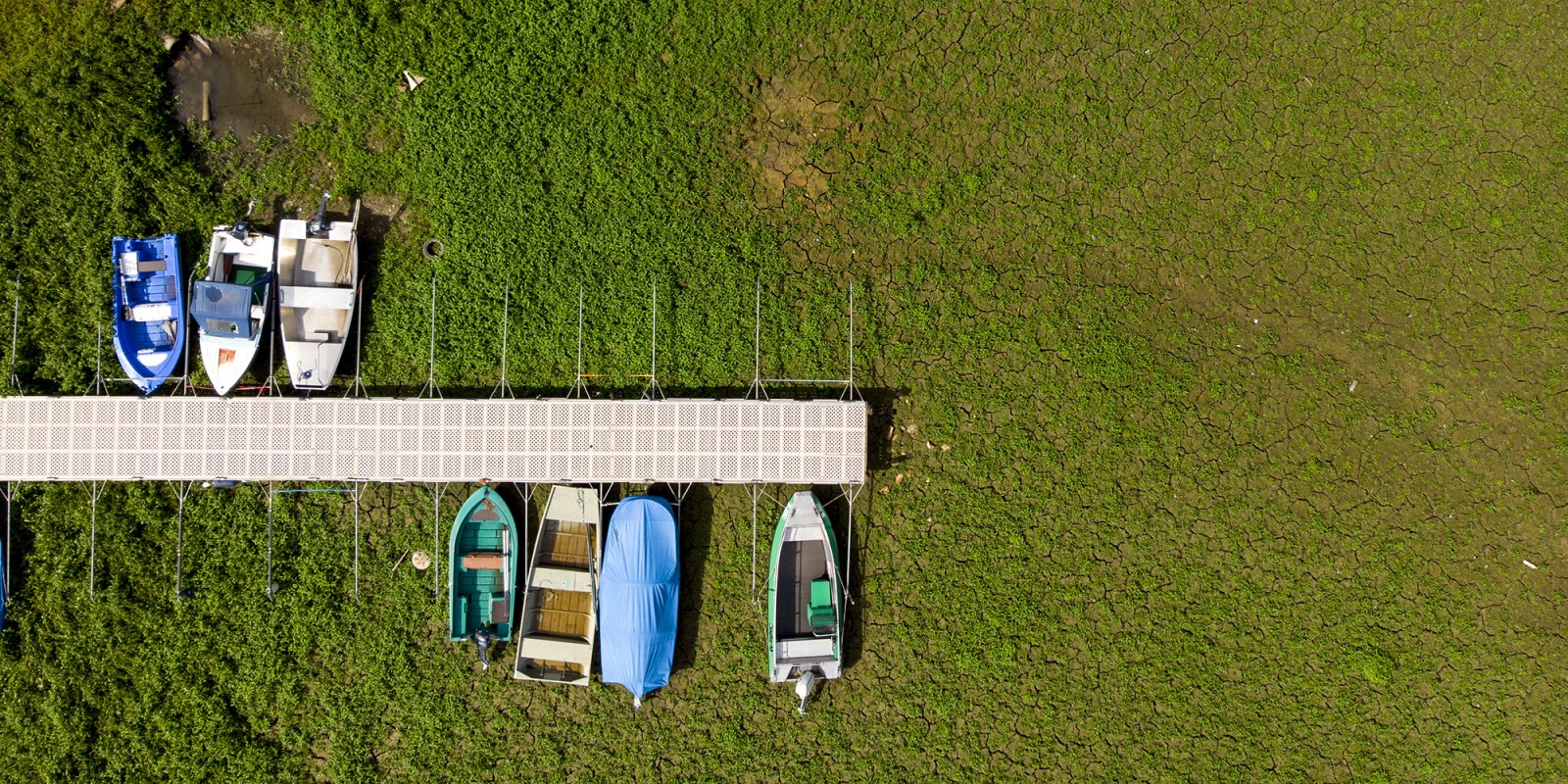
Stranded boats are trapped in mud covered with greenery on the dried-out shore of the Lac des Brenets, part of the Doubs river, a natural border between eastern France and western Switzerland, in Les Brenets, Switzerland, 17 August 2022. (Photo: EPA-EFE / Laurent Gillieron)
By Don Pinnock | 13 Sep 2022
Humanity’s modification of the soil’s water cycle has pushed the world beyond a safe operating space for life as we know it on Earth.
_______________________________________________________________________________________________________________________
Stranded boats in dry European rivers and the need for boats in flooded streets in Pakistan and Chicago are surface indicators of a deeper problem of declining soil moisture across the planet, according to a study by 18 top scientists.
They call it the Green Water problem, the hidden twin of Blue Water, the stuff that rains on us, runs down rivers and which we spray on our fields, drink and flush down the loo. It’s root-depth water without which plants can’t grow.
In a report published in the journal Nature last month, researchers from the Stockholm Resilience Centre say we appear to have reached a Green Water tipping point, the critical threshold broadly agreed on by relevant scientists where a small shift can alter the state or development of a global system.
Human activities have the potential to do this, forcing a climate system to cross some limit, triggering a transition to a new state which accelerates faster than the cause which triggered it.
The study used soil moisture in the root zone of plants to measure the Green Water boundary, a margin which is directly influenced by human pressures and which impacts on a range of large-scale ecological, climatic, biogeochemical and hydrological dynamics.
It found soil moisture changing from the boreal forests to the tropics, from farmlands to forests.
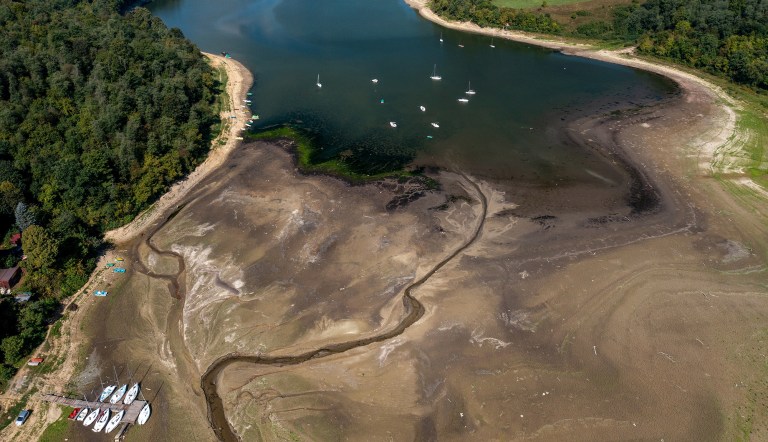
An aerial view of the exposed bottom of one of the arms of the Solinskie (Solina) Lake, in the town of Chrewt, southeastern Poland, 30 August 2022. (Photo: EPA-EFE / Darek Delmanowicz)
In measuring changes, the study drew two pre-industrial baselines: 1950 and 1900. The researchers found that from around 1920 the soil began drying, shifting root-zone water modification into a new normal.
This is causing “rising Earth system risks at a scale that modern civilisations might not have ever faced” and the water variability that sustained former societies, it warns.
Safe operating space
Based on Earth system dynamics, planetary boundaries are safe operating spaces within which humanity can thrive. There are nine of these, based on the comparatively stable Holocene epoch which has lasted around 10,000 years up to the present.
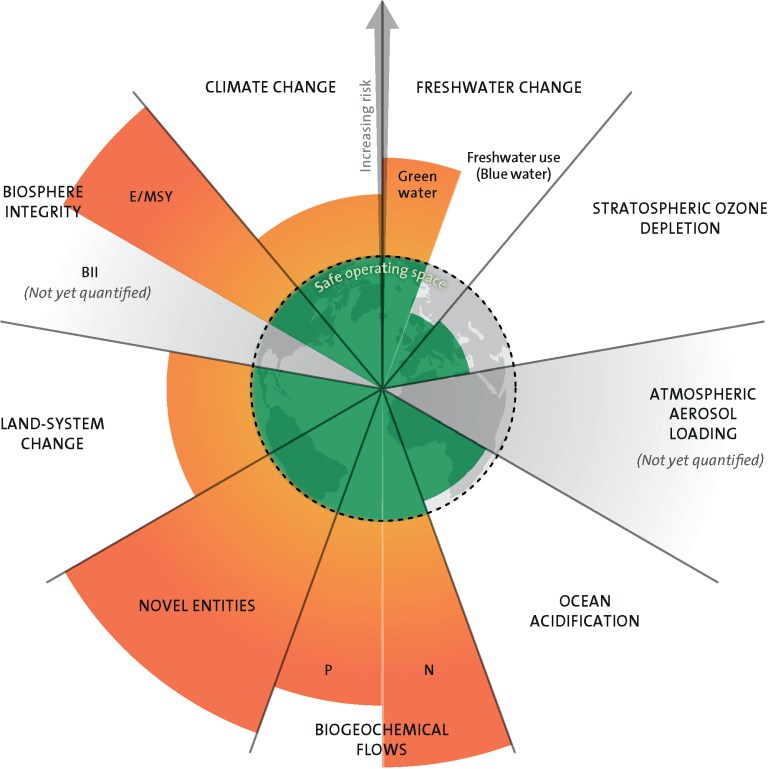
The nine planetary boundaries, counter-clockwise from top: climate change, biosphere integrity (functional and genetic), land-system change, release of novel chemicals, biogeochemical flows (nitrogen and phosphorus), ocean acidification, atmospheric aerosol pollution, stratospheric ozone depletion, and freshwater change. (Image courtesy of J Lokrantz /Azote based on Steffen et al. 2015 [via Stockholm Resilience Centre])
This is now shifting to the Anthropocene, dating from the beginning of significant human impact on Earth’s geology and ecosystems, including climate change.
These zones are biosphere integrity, climate change, ozone depletion, atmospheric aerosols, ocean acidification, biochemical flows, land-system changes, novel (man-made) entities and freshwater change.
We have crossed all but three of these safe boundaries — ocean acidification, atmospheric aerosols and ozone depletion.
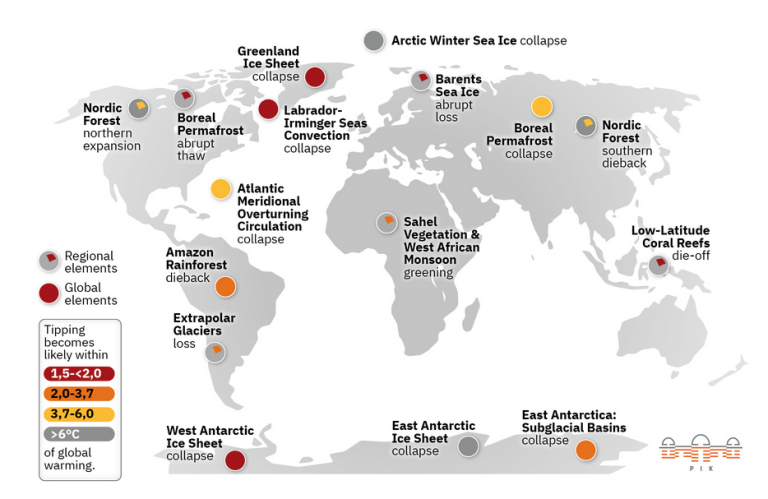
Tipping points. (Figure designed at PIK, based on Armstrong McKay et al., Science [2022]).
The idea of climate tipping points was first introduced by the United Nations’ climate science group, the Intergovernmental Panel on Climate Change, two decades ago. If crossed, said the panel, they could spark a significant change in the way the Earth’s systems operate, affecting oceans, weather and chemical processes, which could be irreversible.
At the time, it was thought the tipping points would be crossed only if global average temperatures increased by more than 5°C. But since then, there has been increasing evidence that these thresholds may be crossed much earlier.
Even though some of the other tipping points — such as dieback in the Amazon rainforest — aren’t expected to be triggered unless global temperatures rise by 3.5°C, all of these systems are connected. So once one system begins to fail, it could increase the likelihood of others collapsing.
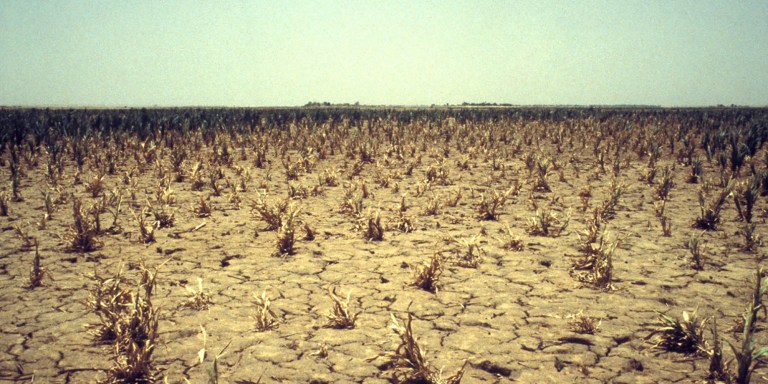
Mali Gao Drought affected the growing of millet in 1984 and 1985. (Photo: Supplied)
According to Arne Tobian, co-author of the Nature report, “the Amazon rainforest depends on soil moisture for its survival. But there is evidence that parts of the Amazon are drying out.
“The forest is losing soil moisture as a result of climate change and deforestation. These changes are potentially pushing the Amazon closer to a tipping point where large parts could switch from rainforest to savanna-like states.”
Cascade effect
The ability of soil to retain moisture is impacted by human activities through intensive agriculture, urbanisation (pavements, roads and buildings) precipitation and evaporation changes, different land and water use plus climate change.
Green Water depletion has an impact on other tipping points, says the study. The resilience of rainforests is an example. Damage through clear-cutting and farmland expansion reduces rainfall, further reducing soil moisture and tree resilience. Below a critical threshold, forests die. This reduces species diversity and carbon sequestration, increasing global warming.
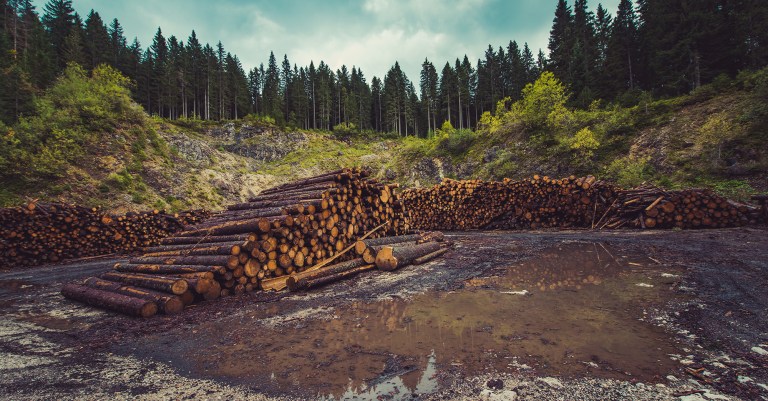
Global deforestation (Photo: Unsplash / Ales Krivec)
Climate change is not just about global warming, but climate-driven extreme weather events. This increases both severe drought and deluge, as can be seen in heat waves and floods in North America, Europe, Pakistan and Australia.
Both wet and dry departures from the pre-industrial baseline have increased steadily since 1900, says the study.
“This is a wake-up call that we need to stop how we modify Green Water,” says lead author Lan Wang-Erlandsson from the Stockholm Resilience Centre at Stockholm University.
“We are profoundly changing the water cycle.”
“Water is fundamental for any living organism on Earth,” she told Mongabay, noting that impacts on the water cycle are driven by multiple human actions far beyond withdrawal for consumption.
“It’s massively affected by climate change, land management, land degradation and so forth. It’s complex and intertwined in our human activities… in everything we do.
“Severe meteorological droughts in semi-arid regions reduce tree growth that wet anomalies cannot compensate for and decrease overall ecosystem production.” These shifts are likely to precipitate widespread social change, it concludes.
“Historical research of social collapse,” says the report, “illustrates that environmental challenges, such as hydroclimatic shifts towards drier conditions, could trigger societies to grow more complex. This suggests that water variability in the Holocene that sustained former societies might not sustain modern, complex and interdependent societies.”
Is there a solution?
Fresh water, says the study, is the bloodstream of the biosphere. Until recently, only Blue Water — on land and in the atmosphere — has been intensely studied. But Green Water in the soil is vital for ecosystem functioning and has been insufficiently researched and understood.
This has blinded us to the arrival of what may be an irreversible tipping point unless we understand and take action on water-related interaction and feedback.
Because Green Water health impacts so many other planetary boundaries, urgent collaboration across Earth systems resilience is essential, says the study.
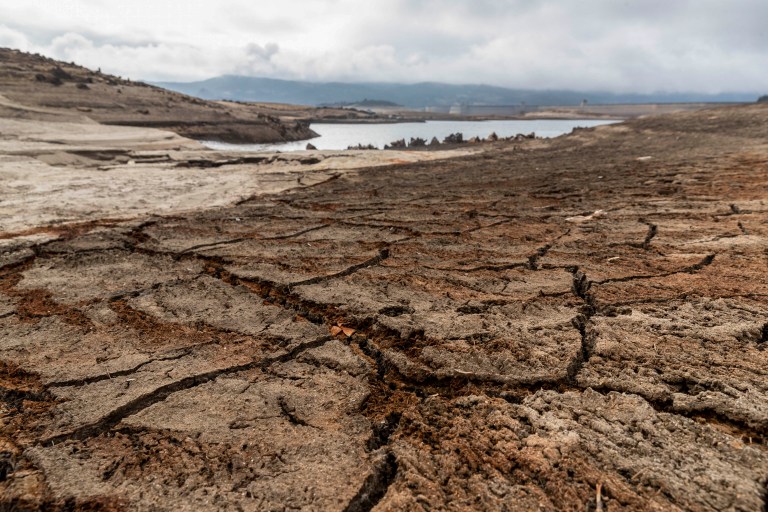
Cracked soil at the bank of the reservoir of Alto Rabagao dam where the waterline is below normal at this time of the year near the village of Vilarinho de Negroes, in Montalegre, northern Portugal, 04 February 2022. EPA-EFE/JOSE COELHO
Debates about planetary boundaries have triggered extensive discussions that challenge global paradigms on economic growth, legal national sovereignty and anthropocentrism, the scientists write.
“Setting a global boundary to Green Water interference can be considered an act of governance in itself,” says the report, “with political, economic, social and ethical implications.”
It’s essential, it says, for societies to urgently set more stringent limits to Green Water modification.
“Humanity needs to act to reverse these escalating changes and come back into a safe zone again,” says Wang-Erlandsson. DM/OBP

Stranded boats are trapped in mud covered with greenery on the dried-out shore of the Lac des Brenets, part of the Doubs river, a natural border between eastern France and western Switzerland, in Les Brenets, Switzerland, 17 August 2022. (Photo: EPA-EFE / Laurent Gillieron)
By Don Pinnock | 13 Sep 2022
Humanity’s modification of the soil’s water cycle has pushed the world beyond a safe operating space for life as we know it on Earth.
_______________________________________________________________________________________________________________________
Stranded boats in dry European rivers and the need for boats in flooded streets in Pakistan and Chicago are surface indicators of a deeper problem of declining soil moisture across the planet, according to a study by 18 top scientists.
They call it the Green Water problem, the hidden twin of Blue Water, the stuff that rains on us, runs down rivers and which we spray on our fields, drink and flush down the loo. It’s root-depth water without which plants can’t grow.
In a report published in the journal Nature last month, researchers from the Stockholm Resilience Centre say we appear to have reached a Green Water tipping point, the critical threshold broadly agreed on by relevant scientists where a small shift can alter the state or development of a global system.
Human activities have the potential to do this, forcing a climate system to cross some limit, triggering a transition to a new state which accelerates faster than the cause which triggered it.
The study used soil moisture in the root zone of plants to measure the Green Water boundary, a margin which is directly influenced by human pressures and which impacts on a range of large-scale ecological, climatic, biogeochemical and hydrological dynamics.
It found soil moisture changing from the boreal forests to the tropics, from farmlands to forests.

An aerial view of the exposed bottom of one of the arms of the Solinskie (Solina) Lake, in the town of Chrewt, southeastern Poland, 30 August 2022. (Photo: EPA-EFE / Darek Delmanowicz)
In measuring changes, the study drew two pre-industrial baselines: 1950 and 1900. The researchers found that from around 1920 the soil began drying, shifting root-zone water modification into a new normal.
This is causing “rising Earth system risks at a scale that modern civilisations might not have ever faced” and the water variability that sustained former societies, it warns.
Safe operating space
Based on Earth system dynamics, planetary boundaries are safe operating spaces within which humanity can thrive. There are nine of these, based on the comparatively stable Holocene epoch which has lasted around 10,000 years up to the present.

The nine planetary boundaries, counter-clockwise from top: climate change, biosphere integrity (functional and genetic), land-system change, release of novel chemicals, biogeochemical flows (nitrogen and phosphorus), ocean acidification, atmospheric aerosol pollution, stratospheric ozone depletion, and freshwater change. (Image courtesy of J Lokrantz /Azote based on Steffen et al. 2015 [via Stockholm Resilience Centre])
This is now shifting to the Anthropocene, dating from the beginning of significant human impact on Earth’s geology and ecosystems, including climate change.
These zones are biosphere integrity, climate change, ozone depletion, atmospheric aerosols, ocean acidification, biochemical flows, land-system changes, novel (man-made) entities and freshwater change.
We have crossed all but three of these safe boundaries — ocean acidification, atmospheric aerosols and ozone depletion.

Tipping points. (Figure designed at PIK, based on Armstrong McKay et al., Science [2022]).
The idea of climate tipping points was first introduced by the United Nations’ climate science group, the Intergovernmental Panel on Climate Change, two decades ago. If crossed, said the panel, they could spark a significant change in the way the Earth’s systems operate, affecting oceans, weather and chemical processes, which could be irreversible.
At the time, it was thought the tipping points would be crossed only if global average temperatures increased by more than 5°C. But since then, there has been increasing evidence that these thresholds may be crossed much earlier.
Even though some of the other tipping points — such as dieback in the Amazon rainforest — aren’t expected to be triggered unless global temperatures rise by 3.5°C, all of these systems are connected. So once one system begins to fail, it could increase the likelihood of others collapsing.

Mali Gao Drought affected the growing of millet in 1984 and 1985. (Photo: Supplied)
According to Arne Tobian, co-author of the Nature report, “the Amazon rainforest depends on soil moisture for its survival. But there is evidence that parts of the Amazon are drying out.
“The forest is losing soil moisture as a result of climate change and deforestation. These changes are potentially pushing the Amazon closer to a tipping point where large parts could switch from rainforest to savanna-like states.”
Cascade effect
The ability of soil to retain moisture is impacted by human activities through intensive agriculture, urbanisation (pavements, roads and buildings) precipitation and evaporation changes, different land and water use plus climate change.
Green Water depletion has an impact on other tipping points, says the study. The resilience of rainforests is an example. Damage through clear-cutting and farmland expansion reduces rainfall, further reducing soil moisture and tree resilience. Below a critical threshold, forests die. This reduces species diversity and carbon sequestration, increasing global warming.

Global deforestation (Photo: Unsplash / Ales Krivec)
Climate change is not just about global warming, but climate-driven extreme weather events. This increases both severe drought and deluge, as can be seen in heat waves and floods in North America, Europe, Pakistan and Australia.
Both wet and dry departures from the pre-industrial baseline have increased steadily since 1900, says the study.
“This is a wake-up call that we need to stop how we modify Green Water,” says lead author Lan Wang-Erlandsson from the Stockholm Resilience Centre at Stockholm University.
“We are profoundly changing the water cycle.”
“Water is fundamental for any living organism on Earth,” she told Mongabay, noting that impacts on the water cycle are driven by multiple human actions far beyond withdrawal for consumption.
“It’s massively affected by climate change, land management, land degradation and so forth. It’s complex and intertwined in our human activities… in everything we do.
“Severe meteorological droughts in semi-arid regions reduce tree growth that wet anomalies cannot compensate for and decrease overall ecosystem production.” These shifts are likely to precipitate widespread social change, it concludes.
“Historical research of social collapse,” says the report, “illustrates that environmental challenges, such as hydroclimatic shifts towards drier conditions, could trigger societies to grow more complex. This suggests that water variability in the Holocene that sustained former societies might not sustain modern, complex and interdependent societies.”
Is there a solution?
Fresh water, says the study, is the bloodstream of the biosphere. Until recently, only Blue Water — on land and in the atmosphere — has been intensely studied. But Green Water in the soil is vital for ecosystem functioning and has been insufficiently researched and understood.
This has blinded us to the arrival of what may be an irreversible tipping point unless we understand and take action on water-related interaction and feedback.
Because Green Water health impacts so many other planetary boundaries, urgent collaboration across Earth systems resilience is essential, says the study.

Cracked soil at the bank of the reservoir of Alto Rabagao dam where the waterline is below normal at this time of the year near the village of Vilarinho de Negroes, in Montalegre, northern Portugal, 04 February 2022. EPA-EFE/JOSE COELHO
Debates about planetary boundaries have triggered extensive discussions that challenge global paradigms on economic growth, legal national sovereignty and anthropocentrism, the scientists write.
“Setting a global boundary to Green Water interference can be considered an act of governance in itself,” says the report, “with political, economic, social and ethical implications.”
It’s essential, it says, for societies to urgently set more stringent limits to Green Water modification.
“Humanity needs to act to reverse these escalating changes and come back into a safe zone again,” says Wang-Erlandsson. DM/OBP
"Education is the most powerful weapon which you can use to change the world." Nelson Mandela
The desire for equality must never exceed the demands of knowledge
The desire for equality must never exceed the demands of knowledge
- Lisbeth
- Site Admin
- Posts: 67571
- Joined: Sat May 19, 2012 12:31 pm
- Country: Switzerland
- Location: Lugano
- Contact:
Re: Climate Change & Biodiversity Loss
It’s Code Red for the survival of all wild creatures — and ultimately humanity
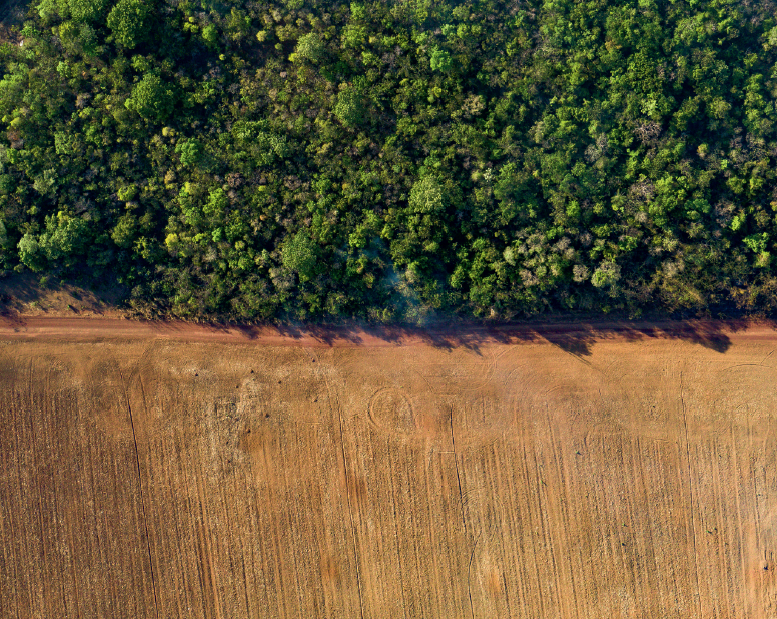
An aerial view of a harvested corn field and forest in Brazil. (Photo: Supplied)
By Don Pinnock | 16 Oct 2022
The pressure we are placing on the natural world is driving an escalating crisis in nature. We can turn back from biodiversity meltdown, but time is running out.
______________________________________________________________________________________________________________
Earth’s wildlife populations are in freefall. A report by 89 global scientists has found that between 1970 and 2018, the abundance of non-domestic mammals, birds, fish, amphibians and reptiles plunged by 69%.
During that time, humans continued to chop down forests, consume beyond the planet’s limits and pollute on a massive scale. The scientists identified seven key threats to wildlife: agriculture, hunting, fishing, logging, pollution, invasive species and climate change.
The Living Planet Report, produced by the World Wide Fund for Nature (WWF) and the Zoological Society of London, analyses 32,000 species populations to measure the abundance of wildlife across all continents. Providing a snapshot of the health of our natural world, it notes that there is cause for dismay and that time is running out to turn back from biodiversity meltdown.
“Humanity,” says the report, “is overusing our planet by at least 75%, the equivalent to living off 1.75 Earths. This overshoot erodes the planet’s health and, with it, humanity’s prospects.”
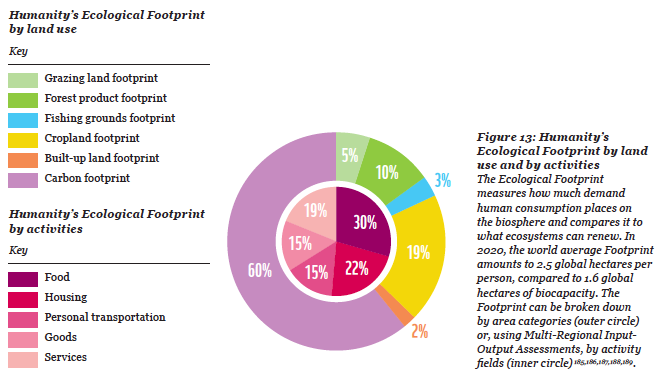
Humanity’s ecological footprint by land use. (Graph: Supplied)
Latin America, which includes the Amazon, had the steepest decline in wildlife abundance — a 94% drop in 40 years. Africa had the second-largest fall at 66%, followed by Asia and the Pacific.
Deforestation of the Amazon is accelerating under a Brazilian government that encourages it, stripping the ecosystem of trees and the wildlife and indigenous people that depend on them. Every year the planet loses roughly 10 million hectares of forests — an area about the size of Portugal.
The report notes that land depletion is the greatest cause of the decline and is linked to human use and human-induced climate change. The areas with the highest probabilities for climate-linked effects, says the report, are the polar regions, the east coast of Australia and South Africa.
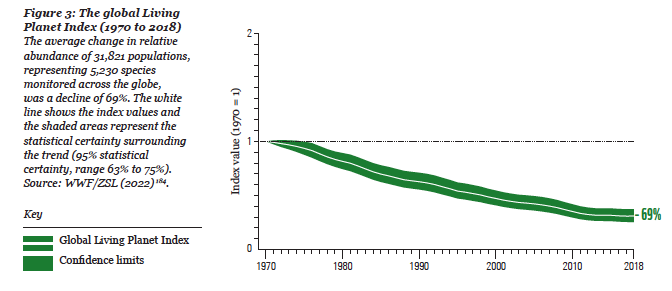
Global Living Planet Index. (Graphic: Supplied)
The total wildlife decline is akin to the disappearance of the human population of China, the Americas, Europe, Africa and Oceania in the space of 50 years. One million plant and animal species are threatened with extinction, says the report, and 1%-2.5% of birds, mammals, amphibians, reptiles and fish have already become extinct. Population abundances and genetic diversity have decreased and species are losing their climatically determined habitats.
Freshwater populations have been hardest hit, declining by an average of 83%. The report notes that only 37% of rivers longer than 1,000km remain free-flowing over their entire length. “When some fish species migrate large distances along these ‘swimways’ the presence of dams and reservoirs poses a major threat to their survival.”
In the oceans, the global abundance of oceanic sharks and rays declined by 71% over the past 50 years, due mainly to an 18-fold increase in fishing pressure since 1970.
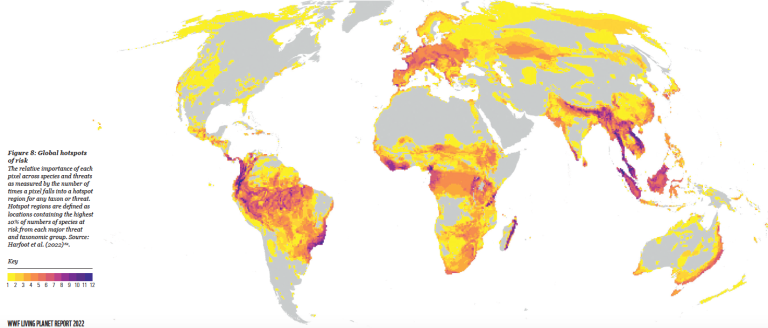
Global hotspots of risk. (Graphic: Supplied)
‘Terrifying figures’
“The message is clear and the lights are flashing red,” says Marco Lambertini, the director-general of WWF International. “Our most comprehensive report ever on the state of global vertebrate wildlife populations presents terrifying figures: a shocking two-thirds decline in the global Living Planet Index in less than 50 years.”
We know that the health of our planet is declining, says the report, and we know why. We also know that we have the knowledge and means to address climate change and biodiversity loss.
An important factor in species and habitat, says the report, is indigenous communities.
“Leaders in dominant societies have failed to control the human activities driving climate change and habitat loss, while indigenous lands and waters have been successfully taken care of over millennia.
“Far from the colonial idea of separating people from nature in order to preserve it, indigenous approaches to conservation regularly place reciprocal people-place relationships at the centre of cultural and care practice. In Canada, Brazil and Australia, for instance, vertebrate biodiversity in indigenous territories equals or surpasses that found within formally protected areas.”
To save nature, the report says, it will be necessary to:
The report sounds a necessary warning, but fails to name the primary culprits that have fuelled the collapse of biodiversity. There are reasons…
The WWF has been in existence for 60 years. It is the world’s largest environmental NGO, with assets reportedly of nearly $1-billion raised from foundations, public donations, governments and corporations. It has more than five million supporters in 100 countries. Its primary stated goal is the protection of biological diversity and natural resources.
The report is therefore something of an indictment of itself, after spending 60 years seemingly failing to stem biodiversity meltdown despite large funding and many programmes. Its latest report, while valid and vital in its findings, is of course also a fundraising document.
There are notable silences. In the latest report, there is only a passing mention of oil, coal or agribusiness, the world’s greatest cause of climate change and biodiversity collapse. There have been ongoing controversies about the source of WWF funds, and claims of support for corporate “greenwashing” in exchange for financial support.
Allegations in a book by German journalist Wilfried Huismann, PandaLeaks, criticises the WWF for its involvement with corporations that are responsible for large-scale destruction of the environment, such as Coca-Cola.
Investigative journalism by NBC, and later Naomi Klein, found the WWF had profited from multimillion-dollar investment contracts it put into oil, gas, coal and tar sands developments. When confronted, it did not pull out of these, saying instead it would downscale. The WWF does not oppose fossil fuels, but engages in what it internally terms “responsible development” of fossil fuels. This does not diminish the warnings the report contains, however, only its solutions.
The United Nations will meet in Montreal in December to agree on a new Global Framework for Biodiversity. This may be the last chance we get to save the bulk of the planet’s wild creatures.
“By the end of this decade,” the report says, “we will know whether this plan was enough or not. The fight for people and nature will have been won or lost. The signs are not good. Discussions so far are locked in old-world thinking and entrenched positions, with no sign of the bold action needed to achieve a nature-positive future.”
It is hoped that the WWF will rethink its entrenched position and undertake bolder actions to achieve that future. It has the global clout, but does it have the political will? DM/OBP

An aerial view of a harvested corn field and forest in Brazil. (Photo: Supplied)
By Don Pinnock | 16 Oct 2022
The pressure we are placing on the natural world is driving an escalating crisis in nature. We can turn back from biodiversity meltdown, but time is running out.
______________________________________________________________________________________________________________
Earth’s wildlife populations are in freefall. A report by 89 global scientists has found that between 1970 and 2018, the abundance of non-domestic mammals, birds, fish, amphibians and reptiles plunged by 69%.
During that time, humans continued to chop down forests, consume beyond the planet’s limits and pollute on a massive scale. The scientists identified seven key threats to wildlife: agriculture, hunting, fishing, logging, pollution, invasive species and climate change.
The Living Planet Report, produced by the World Wide Fund for Nature (WWF) and the Zoological Society of London, analyses 32,000 species populations to measure the abundance of wildlife across all continents. Providing a snapshot of the health of our natural world, it notes that there is cause for dismay and that time is running out to turn back from biodiversity meltdown.
“Humanity,” says the report, “is overusing our planet by at least 75%, the equivalent to living off 1.75 Earths. This overshoot erodes the planet’s health and, with it, humanity’s prospects.”

Humanity’s ecological footprint by land use. (Graph: Supplied)
Latin America, which includes the Amazon, had the steepest decline in wildlife abundance — a 94% drop in 40 years. Africa had the second-largest fall at 66%, followed by Asia and the Pacific.
Deforestation of the Amazon is accelerating under a Brazilian government that encourages it, stripping the ecosystem of trees and the wildlife and indigenous people that depend on them. Every year the planet loses roughly 10 million hectares of forests — an area about the size of Portugal.
The report notes that land depletion is the greatest cause of the decline and is linked to human use and human-induced climate change. The areas with the highest probabilities for climate-linked effects, says the report, are the polar regions, the east coast of Australia and South Africa.

Global Living Planet Index. (Graphic: Supplied)
The total wildlife decline is akin to the disappearance of the human population of China, the Americas, Europe, Africa and Oceania in the space of 50 years. One million plant and animal species are threatened with extinction, says the report, and 1%-2.5% of birds, mammals, amphibians, reptiles and fish have already become extinct. Population abundances and genetic diversity have decreased and species are losing their climatically determined habitats.
Freshwater populations have been hardest hit, declining by an average of 83%. The report notes that only 37% of rivers longer than 1,000km remain free-flowing over their entire length. “When some fish species migrate large distances along these ‘swimways’ the presence of dams and reservoirs poses a major threat to their survival.”
In the oceans, the global abundance of oceanic sharks and rays declined by 71% over the past 50 years, due mainly to an 18-fold increase in fishing pressure since 1970.

Global hotspots of risk. (Graphic: Supplied)
‘Terrifying figures’
“The message is clear and the lights are flashing red,” says Marco Lambertini, the director-general of WWF International. “Our most comprehensive report ever on the state of global vertebrate wildlife populations presents terrifying figures: a shocking two-thirds decline in the global Living Planet Index in less than 50 years.”
We know that the health of our planet is declining, says the report, and we know why. We also know that we have the knowledge and means to address climate change and biodiversity loss.
An important factor in species and habitat, says the report, is indigenous communities.
“Leaders in dominant societies have failed to control the human activities driving climate change and habitat loss, while indigenous lands and waters have been successfully taken care of over millennia.
“Far from the colonial idea of separating people from nature in order to preserve it, indigenous approaches to conservation regularly place reciprocal people-place relationships at the centre of cultural and care practice. In Canada, Brazil and Australia, for instance, vertebrate biodiversity in indigenous territories equals or surpasses that found within formally protected areas.”
To save nature, the report says, it will be necessary to:
- Enforce restrictions on fossil fuels;
- Make laws to protect endangered species and spaces;
- Fund ecological restoration;
- Phase out and better regulate extractive industries;
- Require businesses to carry out human rights and environmental due diligence across their supply chains;
- End subsidies that encourage activities that degrade ecosystems; and
- Shift to sustainable production and consumption and a transition to a circular economy.
The report sounds a necessary warning, but fails to name the primary culprits that have fuelled the collapse of biodiversity. There are reasons…
The WWF has been in existence for 60 years. It is the world’s largest environmental NGO, with assets reportedly of nearly $1-billion raised from foundations, public donations, governments and corporations. It has more than five million supporters in 100 countries. Its primary stated goal is the protection of biological diversity and natural resources.
The report is therefore something of an indictment of itself, after spending 60 years seemingly failing to stem biodiversity meltdown despite large funding and many programmes. Its latest report, while valid and vital in its findings, is of course also a fundraising document.
There are notable silences. In the latest report, there is only a passing mention of oil, coal or agribusiness, the world’s greatest cause of climate change and biodiversity collapse. There have been ongoing controversies about the source of WWF funds, and claims of support for corporate “greenwashing” in exchange for financial support.
Allegations in a book by German journalist Wilfried Huismann, PandaLeaks, criticises the WWF for its involvement with corporations that are responsible for large-scale destruction of the environment, such as Coca-Cola.
Investigative journalism by NBC, and later Naomi Klein, found the WWF had profited from multimillion-dollar investment contracts it put into oil, gas, coal and tar sands developments. When confronted, it did not pull out of these, saying instead it would downscale. The WWF does not oppose fossil fuels, but engages in what it internally terms “responsible development” of fossil fuels. This does not diminish the warnings the report contains, however, only its solutions.
The United Nations will meet in Montreal in December to agree on a new Global Framework for Biodiversity. This may be the last chance we get to save the bulk of the planet’s wild creatures.
“By the end of this decade,” the report says, “we will know whether this plan was enough or not. The fight for people and nature will have been won or lost. The signs are not good. Discussions so far are locked in old-world thinking and entrenched positions, with no sign of the bold action needed to achieve a nature-positive future.”
It is hoped that the WWF will rethink its entrenched position and undertake bolder actions to achieve that future. It has the global clout, but does it have the political will? DM/OBP
"Education is the most powerful weapon which you can use to change the world." Nelson Mandela
The desire for equality must never exceed the demands of knowledge
The desire for equality must never exceed the demands of knowledge
- Lisbeth
- Site Admin
- Posts: 67571
- Joined: Sat May 19, 2012 12:31 pm
- Country: Switzerland
- Location: Lugano
- Contact:
Re: Climate Change & Biodiversity Loss
COP27
Nature has a critical role to play in tackling the climate crisis – biodiversity conservation is key
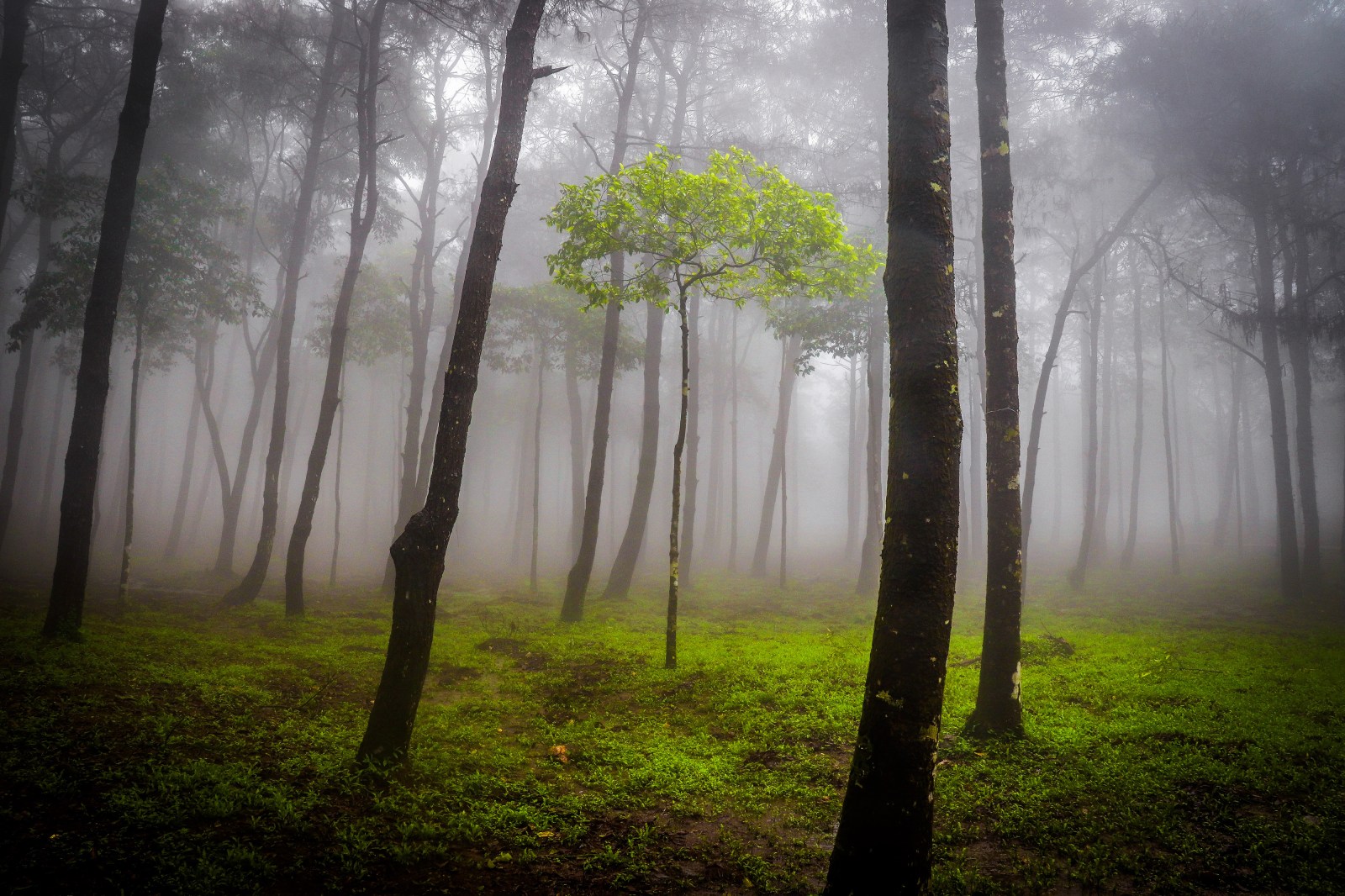
'The Last Truffula Tree'. Deep in Ba Vi National Park in Vietnam sits a beautiful, yet spooky, forest. © jake virus/TNC Photo Contest
By Khaled Elnoby and Ken Mwathe | 09 Nov 2022
A key element of climate change adaptation is through nature-based solutions, including restoration of forests, wetlands and protection of habitats, including grasslands.
_________________________________________________________________________________________________________
We are at a tipping point. From unprecedented heatwaves in Europe and deadly hurricanes in the US, to devastating floods in Pakistan and Nigeria, 2022 has seen unprecedented weather patterns, occasioned by global warming as unmitigated greenhouse gas emissions increase in our atmosphere.
In 2021, extreme weather events cost the global economy an estimated $329-billion, and 4% of global annual economic output could be lost by 2050 due to climate change.
We are in a climate emergency. The latest Intergovernmental Panel on Climate Change’s (IPCC) Sixth Assessment Report 2022 paints a bleak picture. While the plans submitted by signatories to the Paris Agreement would reduce greenhouse gas emissions, they are not ambitious enough to limit the global temperature rise to 1.5°C, with global temperatures predicted to rise between 2.1°C and 2.9°C by 2100.
Developing countries, including those in Africa, are most vulnerable to the effects of climate change. Though Africa generates less than 3% of emissions, the rapidly increasing climate shocks are bound to hit the continent and its people the hardest.
It is against this background that the Climate Summit of the United Nations Framework Convention on Climate Change – the Conference of the Parties (COP) – is being held in Sharm El-Sheikh, Egypt. The 27th edition (COP27) began on 6 November to deliberate on accelerating climate action including adaptation, mitigation and financing. This follows commitments made in the Paris Agreement, a global pledge to take climate action, penned by world leaders in 2015.
Tackling the climate crisis requires a multipronged approach. In 2015, developed countries pledged to mobilise $100-billion in climate finance for developing countries by 2020. However, only about $30-billion had been availed by 2020. Further, Africa has the smallest share of climate action investments compared with other regions. Therefore it is imperative for developed countries to meet these financial obligations, which will be instrumental for climate action.
Climate adaptation, where communities and systems manage the impacts of climate change, is another key strand in tackling climate change. Adaptation is one of the most effective pathways through which communities can cope with the worst effects of climate change. Further, climate mitigation, which includes actions to reduce emissions such as the reduction of fossil fuels, transition to renewable energy sources and use of new technologies, should be explored.
Incorporating nature-based solutions
A key element of climate change adaptation is through nature-based solutions (NbS), including the restoration of forests and wetlands and protection of habitats including grasslands. The restoration of ecosystems can go a long way towards climate change mitigation and adaptation, and reversing biodiversity loss.
According to the Intergovernmental Science Policy Platform on Biodiversity and Ecosystem Services (IPBES), NbS can provide up to 37% of climate mitigation needed until 2030, which would help achieve the Paris Agreement targets.
BirdLife Partnership, the world’s largest and oldest partnership for nature, has been leading on climate adaptation measures. For instance, in Rwanda and Burundi, BirdLife International implemented a programme to help build the climate resilience of local communities through landscape restoration by planting more than 1.2 million trees. Coupled with livelihood improvement strategies, the project helped more than 4,000 households cope with climate change in both countries.
Egypt, which is hosting COP27, has very few wetlands and they are under pressure due to various factors including rapid population growth, which has affected the ability of these lands to regulate climate change impacts, further highlighting the growing need for NbS.
Consequently, Nature Conservation Egypt – BirdLife’s partner in the country – is conducting a national scale study to assess the potential of wastewater treatment plants (WTP) to function as constructed wetlands able to mitigate climate change impacts, support resident and migratory wildlife – especially birds – while functioning as carbon sinks.
In the wider North Africa region, Morocco and Tunisia have created roadmaps and working groups focused on implementing NbS contained in their Nationally Determined Contributions across different sectors.
Further south in the Sahel, BirdLife partners are involved in restoration efforts under the aegis of the Great Green Wall Initiative which aims to grow 8,000km of trees stretching from Senegal in the west to Djibouti in the east, in a bid to tackle desertification.
The restoration uses climate-smart agricultural practices, including biodiversity management, improved water use and management and sustainable land and soil management, to increase crop productivity.
Supported by the German government and the Nature and Biodiversity Conservation Union (Nabu) through the AfriEvolve Initiative, it is supporting local communities in Burkina Faso, Ghana, Ivory Coast, Tanzania, Uganda and Kenya to roll out climate-smart techniques thus ensuring food security and improved livelihoods, while ensuring integrated landscape management.
Governments are called upon not to give lip service to the role of nature and natural ecosystems in the fight against climate change. While on the one hand signatories to various conventions commit to protecting nature, action on the ground through various development projects such as infrastructure, mining and agricultural development, often damage these natural systems, which include forests and wetlands.
In their stock-taking reports to the climate summit, governments must include the extent to which their interventions have either helped or damaged nature.
Climate change and nature are inextricably linked – nature is impacted by climate change but is also part of the solution. The ongoing development of a global plan to protect biodiversity – the Post-2020 Global Biodiversity Framework – is a chance to optimise synergies for addressing the climate and biodiversity crises. The Biodiversity Summit (COP15) in Canada this December is one such chance.
In Sharm El-Sheikh, governments should demonstrate political will by committing finances to address climate change, while focusing on helping hard-hit communities from developing nations. They must also send a strong message about the need to put nature at the heart of climate change adaptation and mitigation.
The time for more promises and lofty statements is long gone, it is now time for action. OBP/DM
Khaled Elnoby is the CEO, Nature Conservation Egypt. Ken Mwathe is the Policy and Communications Coordinator, BirdLife International Africa.
Nature has a critical role to play in tackling the climate crisis – biodiversity conservation is key

'The Last Truffula Tree'. Deep in Ba Vi National Park in Vietnam sits a beautiful, yet spooky, forest. © jake virus/TNC Photo Contest
By Khaled Elnoby and Ken Mwathe | 09 Nov 2022
A key element of climate change adaptation is through nature-based solutions, including restoration of forests, wetlands and protection of habitats, including grasslands.
_________________________________________________________________________________________________________
We are at a tipping point. From unprecedented heatwaves in Europe and deadly hurricanes in the US, to devastating floods in Pakistan and Nigeria, 2022 has seen unprecedented weather patterns, occasioned by global warming as unmitigated greenhouse gas emissions increase in our atmosphere.
In 2021, extreme weather events cost the global economy an estimated $329-billion, and 4% of global annual economic output could be lost by 2050 due to climate change.
We are in a climate emergency. The latest Intergovernmental Panel on Climate Change’s (IPCC) Sixth Assessment Report 2022 paints a bleak picture. While the plans submitted by signatories to the Paris Agreement would reduce greenhouse gas emissions, they are not ambitious enough to limit the global temperature rise to 1.5°C, with global temperatures predicted to rise between 2.1°C and 2.9°C by 2100.
Developing countries, including those in Africa, are most vulnerable to the effects of climate change. Though Africa generates less than 3% of emissions, the rapidly increasing climate shocks are bound to hit the continent and its people the hardest.
It is against this background that the Climate Summit of the United Nations Framework Convention on Climate Change – the Conference of the Parties (COP) – is being held in Sharm El-Sheikh, Egypt. The 27th edition (COP27) began on 6 November to deliberate on accelerating climate action including adaptation, mitigation and financing. This follows commitments made in the Paris Agreement, a global pledge to take climate action, penned by world leaders in 2015.
Tackling the climate crisis requires a multipronged approach. In 2015, developed countries pledged to mobilise $100-billion in climate finance for developing countries by 2020. However, only about $30-billion had been availed by 2020. Further, Africa has the smallest share of climate action investments compared with other regions. Therefore it is imperative for developed countries to meet these financial obligations, which will be instrumental for climate action.
Climate adaptation, where communities and systems manage the impacts of climate change, is another key strand in tackling climate change. Adaptation is one of the most effective pathways through which communities can cope with the worst effects of climate change. Further, climate mitigation, which includes actions to reduce emissions such as the reduction of fossil fuels, transition to renewable energy sources and use of new technologies, should be explored.
Incorporating nature-based solutions
A key element of climate change adaptation is through nature-based solutions (NbS), including the restoration of forests and wetlands and protection of habitats including grasslands. The restoration of ecosystems can go a long way towards climate change mitigation and adaptation, and reversing biodiversity loss.
According to the Intergovernmental Science Policy Platform on Biodiversity and Ecosystem Services (IPBES), NbS can provide up to 37% of climate mitigation needed until 2030, which would help achieve the Paris Agreement targets.
BirdLife Partnership, the world’s largest and oldest partnership for nature, has been leading on climate adaptation measures. For instance, in Rwanda and Burundi, BirdLife International implemented a programme to help build the climate resilience of local communities through landscape restoration by planting more than 1.2 million trees. Coupled with livelihood improvement strategies, the project helped more than 4,000 households cope with climate change in both countries.
Egypt, which is hosting COP27, has very few wetlands and they are under pressure due to various factors including rapid population growth, which has affected the ability of these lands to regulate climate change impacts, further highlighting the growing need for NbS.
Consequently, Nature Conservation Egypt – BirdLife’s partner in the country – is conducting a national scale study to assess the potential of wastewater treatment plants (WTP) to function as constructed wetlands able to mitigate climate change impacts, support resident and migratory wildlife – especially birds – while functioning as carbon sinks.
In the wider North Africa region, Morocco and Tunisia have created roadmaps and working groups focused on implementing NbS contained in their Nationally Determined Contributions across different sectors.
Further south in the Sahel, BirdLife partners are involved in restoration efforts under the aegis of the Great Green Wall Initiative which aims to grow 8,000km of trees stretching from Senegal in the west to Djibouti in the east, in a bid to tackle desertification.
The restoration uses climate-smart agricultural practices, including biodiversity management, improved water use and management and sustainable land and soil management, to increase crop productivity.
Supported by the German government and the Nature and Biodiversity Conservation Union (Nabu) through the AfriEvolve Initiative, it is supporting local communities in Burkina Faso, Ghana, Ivory Coast, Tanzania, Uganda and Kenya to roll out climate-smart techniques thus ensuring food security and improved livelihoods, while ensuring integrated landscape management.
Governments are called upon not to give lip service to the role of nature and natural ecosystems in the fight against climate change. While on the one hand signatories to various conventions commit to protecting nature, action on the ground through various development projects such as infrastructure, mining and agricultural development, often damage these natural systems, which include forests and wetlands.
In their stock-taking reports to the climate summit, governments must include the extent to which their interventions have either helped or damaged nature.
Climate change and nature are inextricably linked – nature is impacted by climate change but is also part of the solution. The ongoing development of a global plan to protect biodiversity – the Post-2020 Global Biodiversity Framework – is a chance to optimise synergies for addressing the climate and biodiversity crises. The Biodiversity Summit (COP15) in Canada this December is one such chance.
In Sharm El-Sheikh, governments should demonstrate political will by committing finances to address climate change, while focusing on helping hard-hit communities from developing nations. They must also send a strong message about the need to put nature at the heart of climate change adaptation and mitigation.
The time for more promises and lofty statements is long gone, it is now time for action. OBP/DM
Khaled Elnoby is the CEO, Nature Conservation Egypt. Ken Mwathe is the Policy and Communications Coordinator, BirdLife International Africa.
"Education is the most powerful weapon which you can use to change the world." Nelson Mandela
The desire for equality must never exceed the demands of knowledge
The desire for equality must never exceed the demands of knowledge


